
Gallery Of Homes: Walker
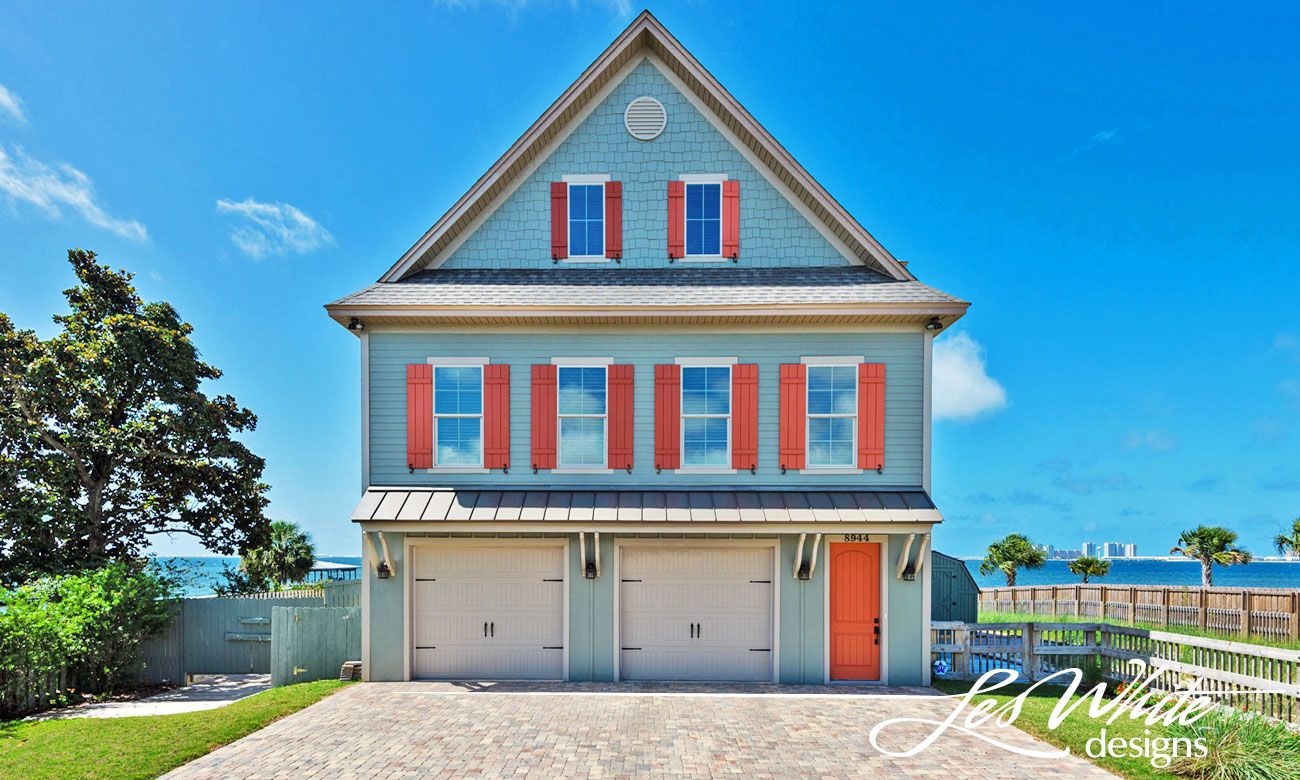

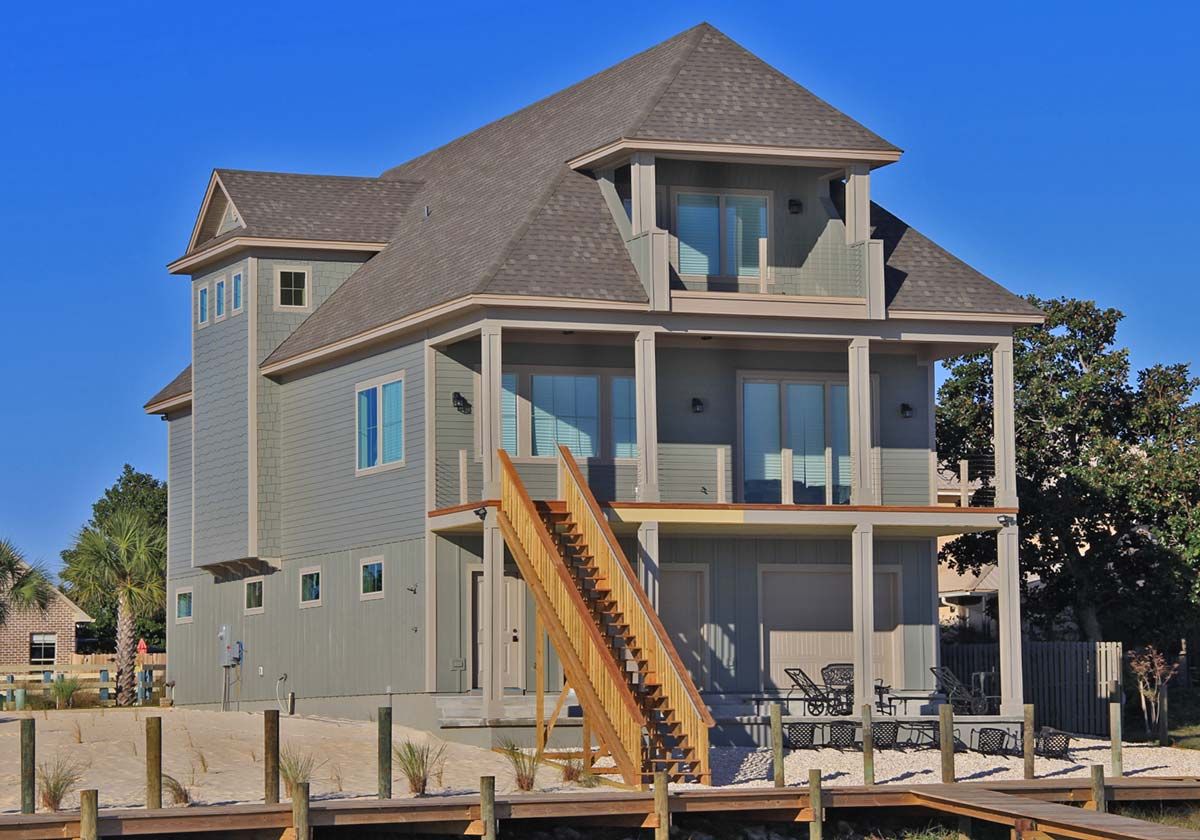
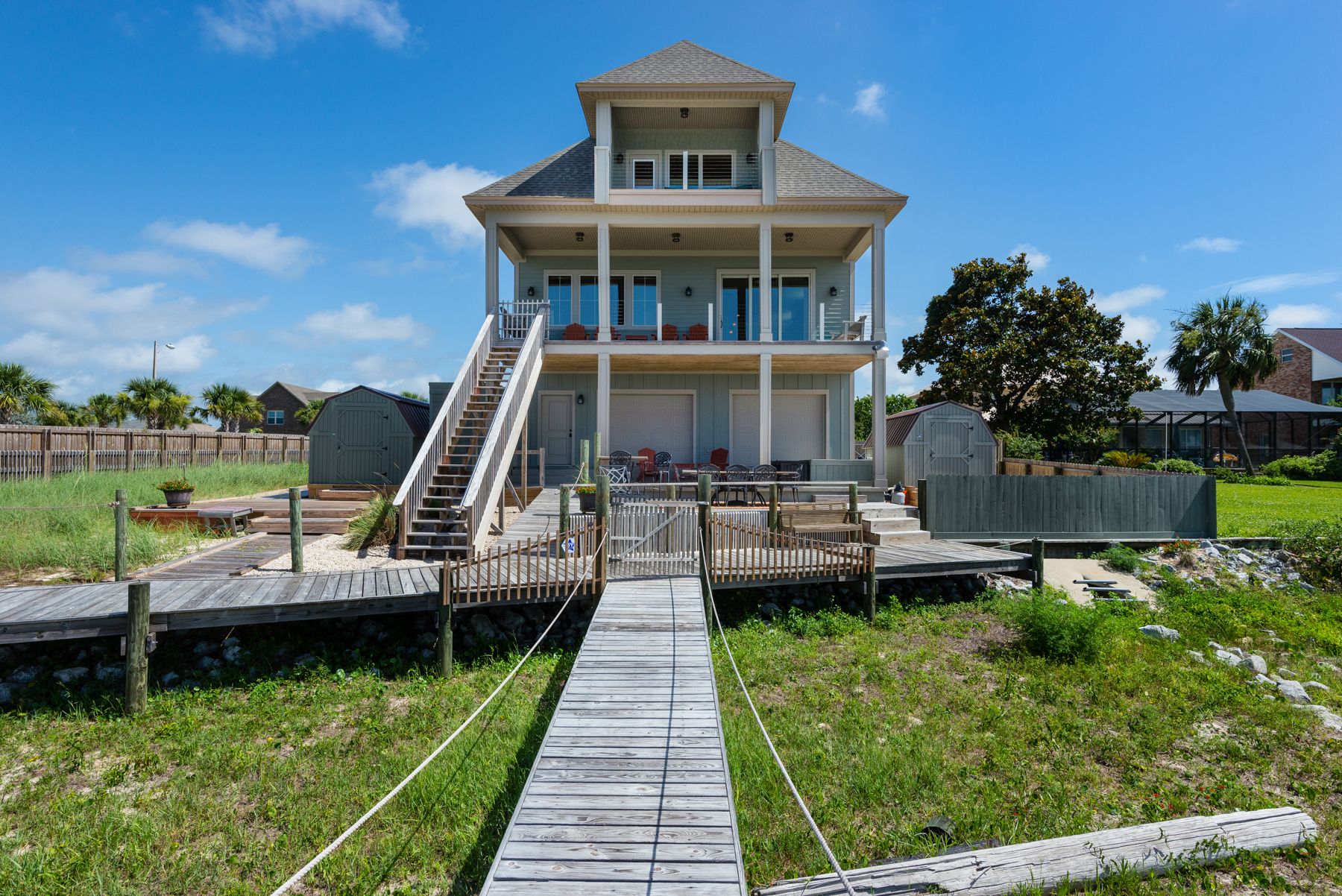
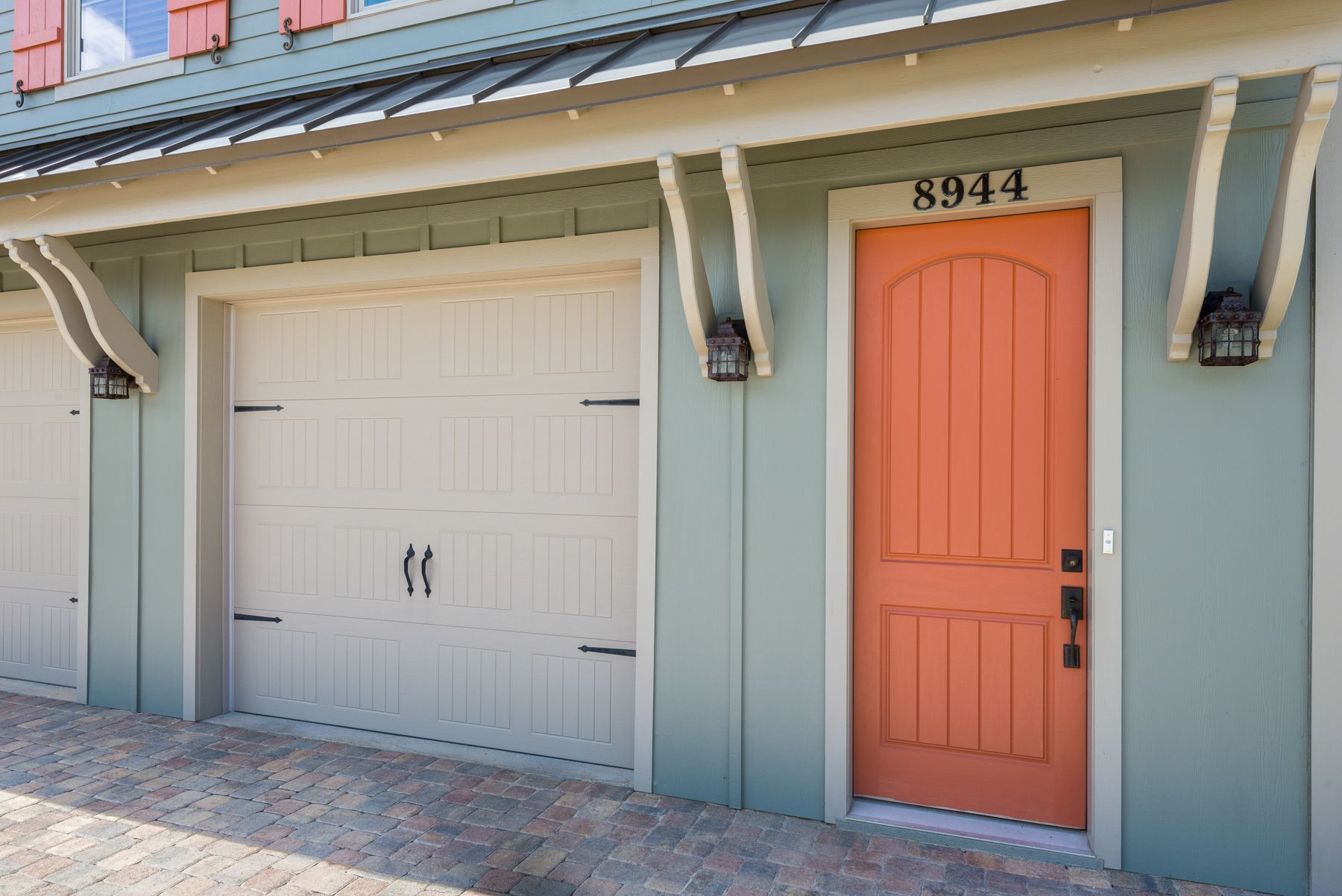
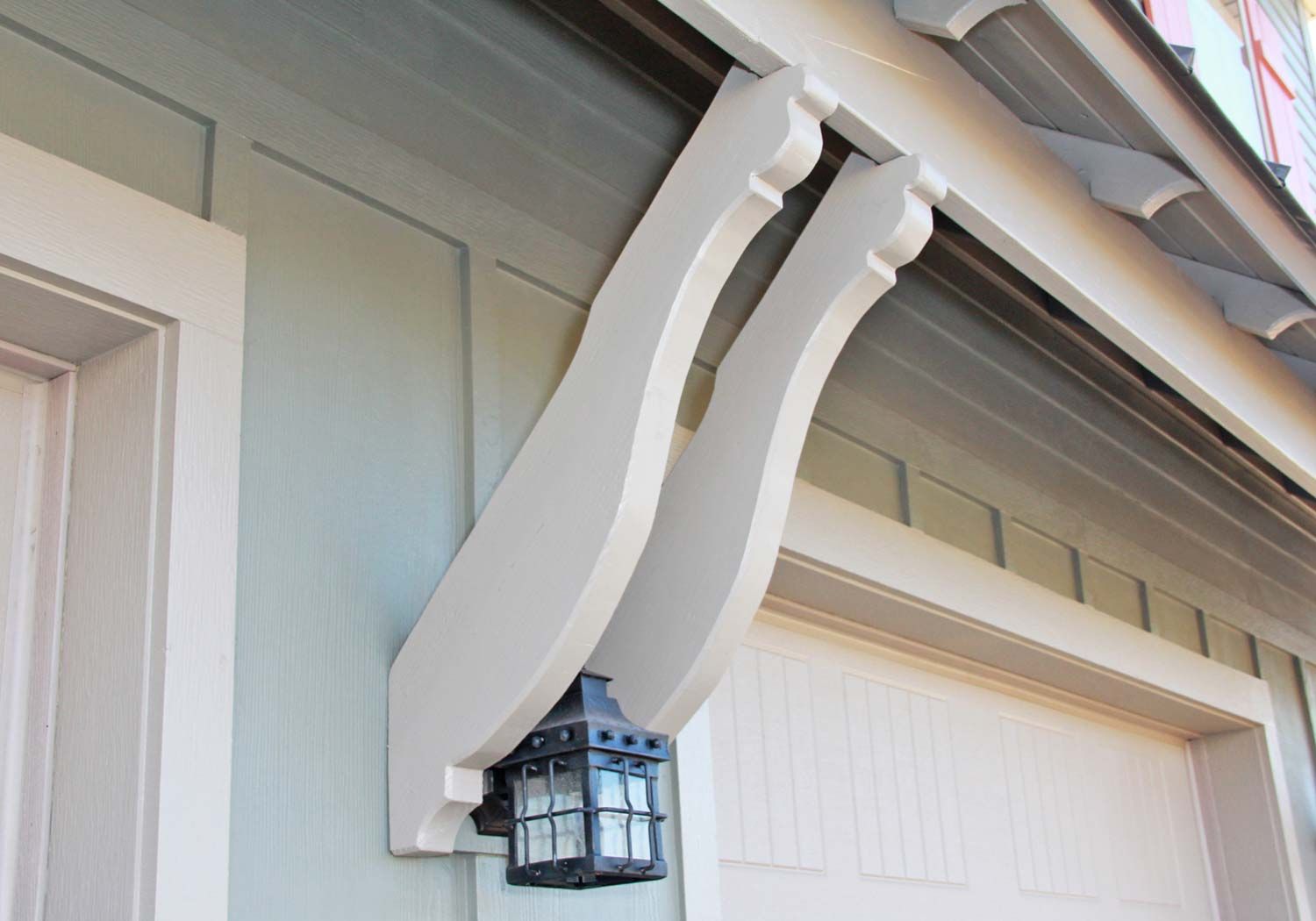
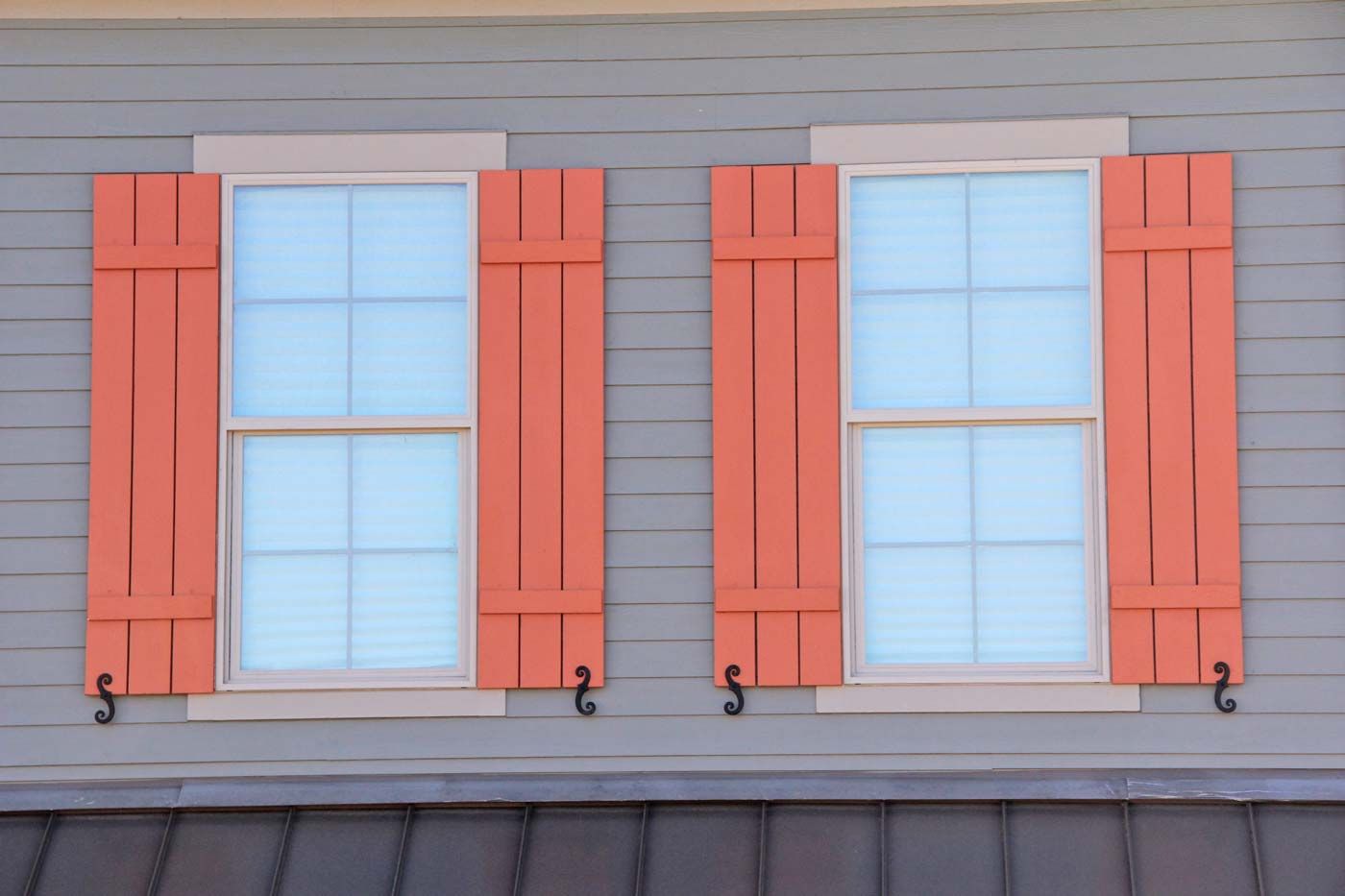
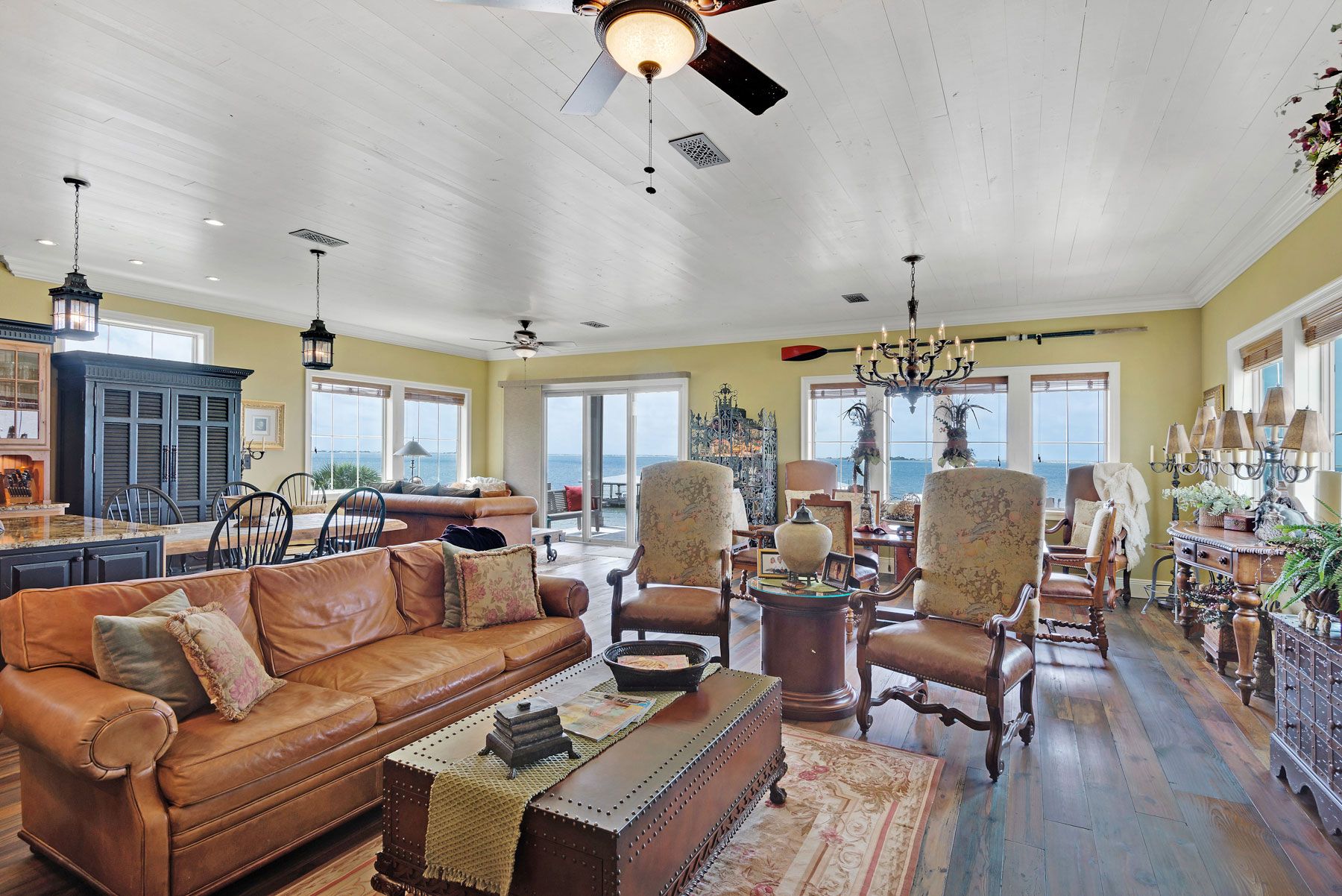


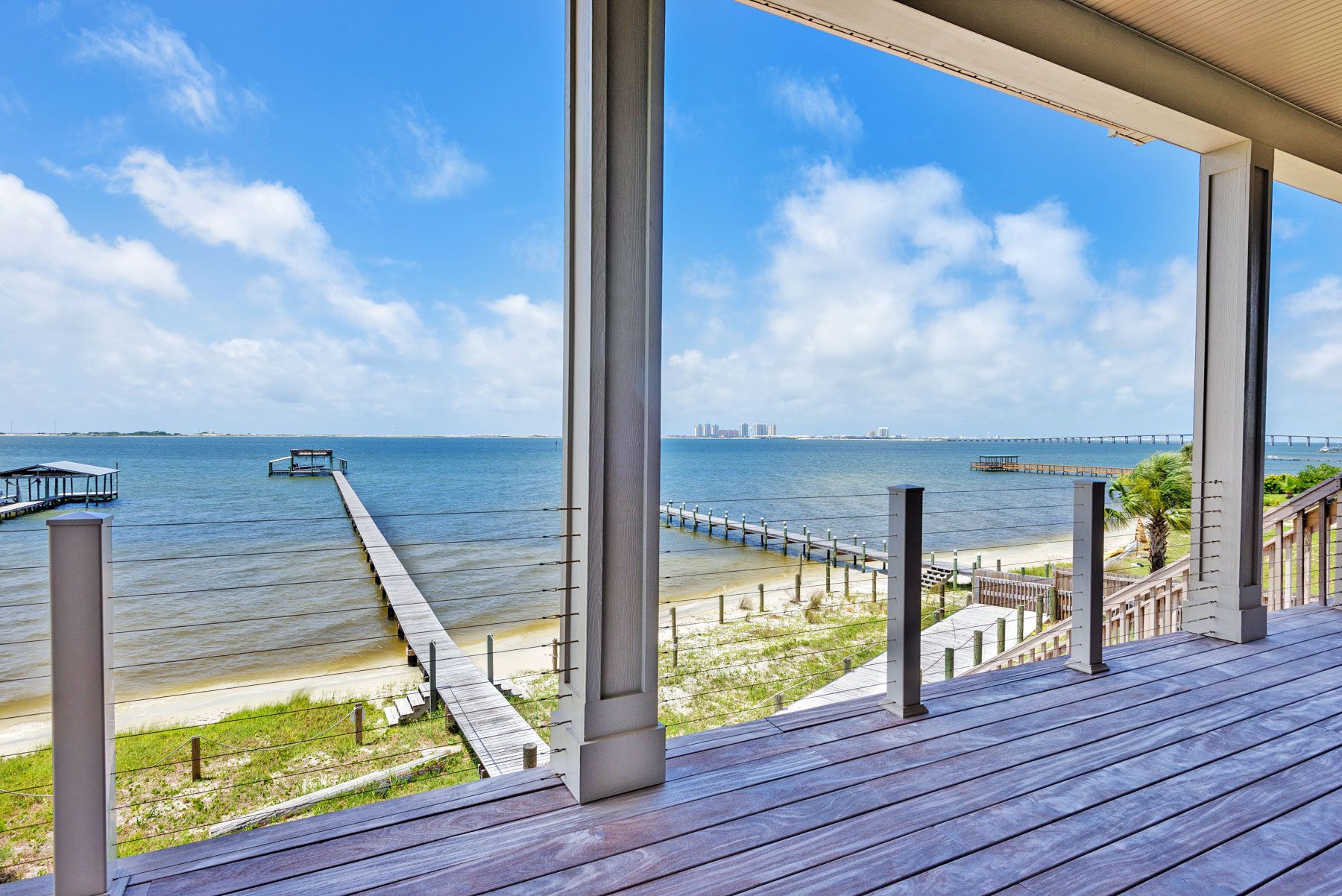
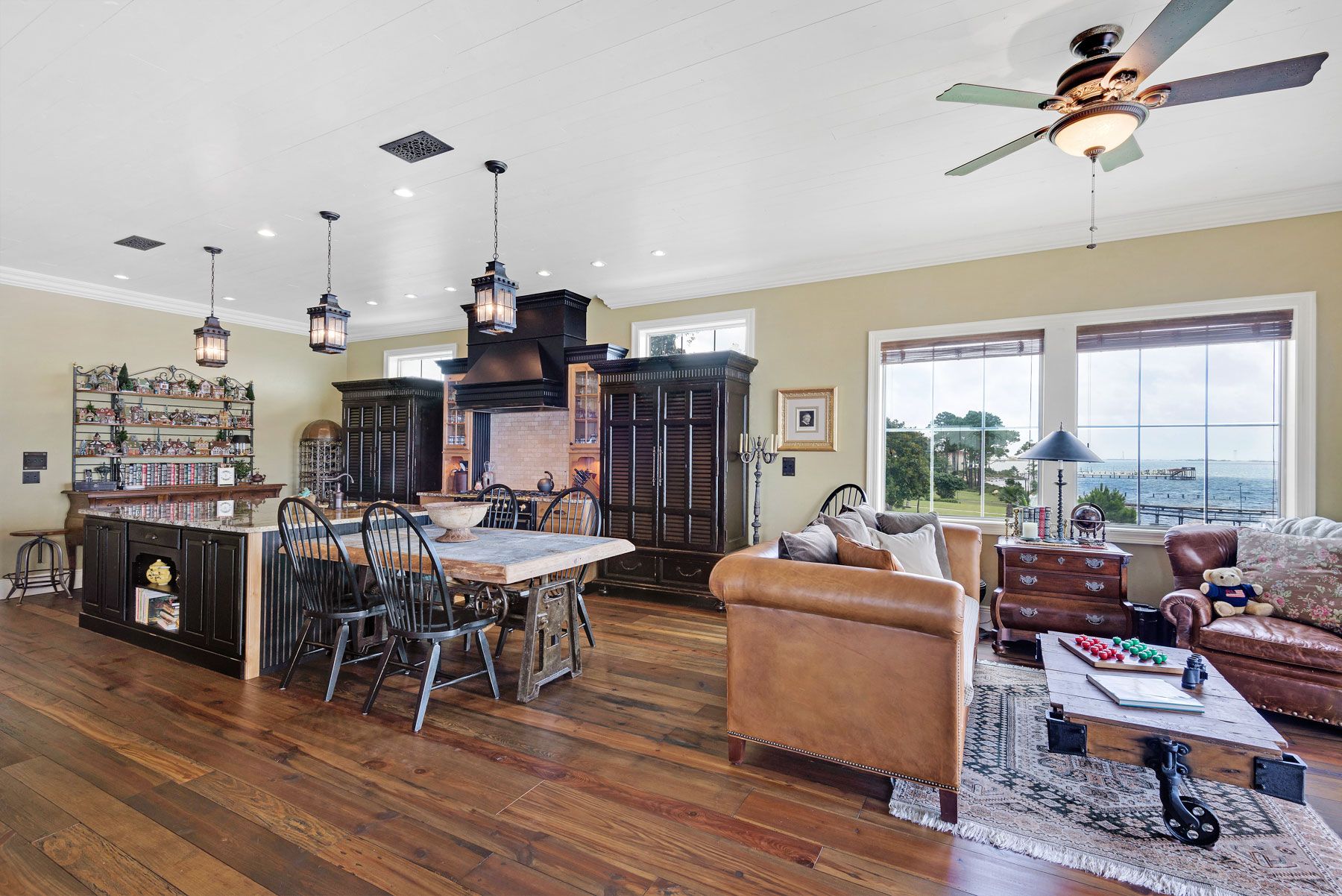


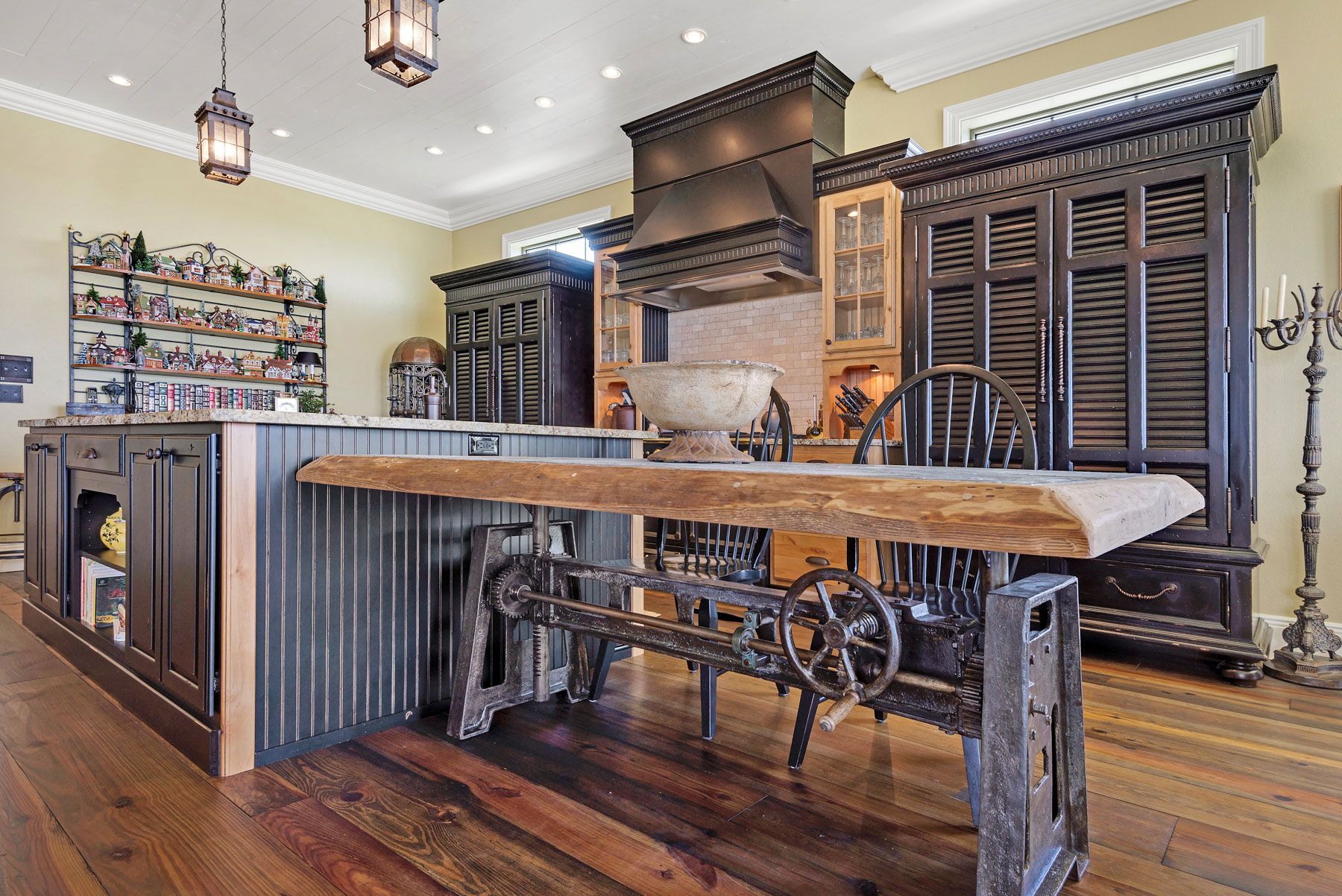

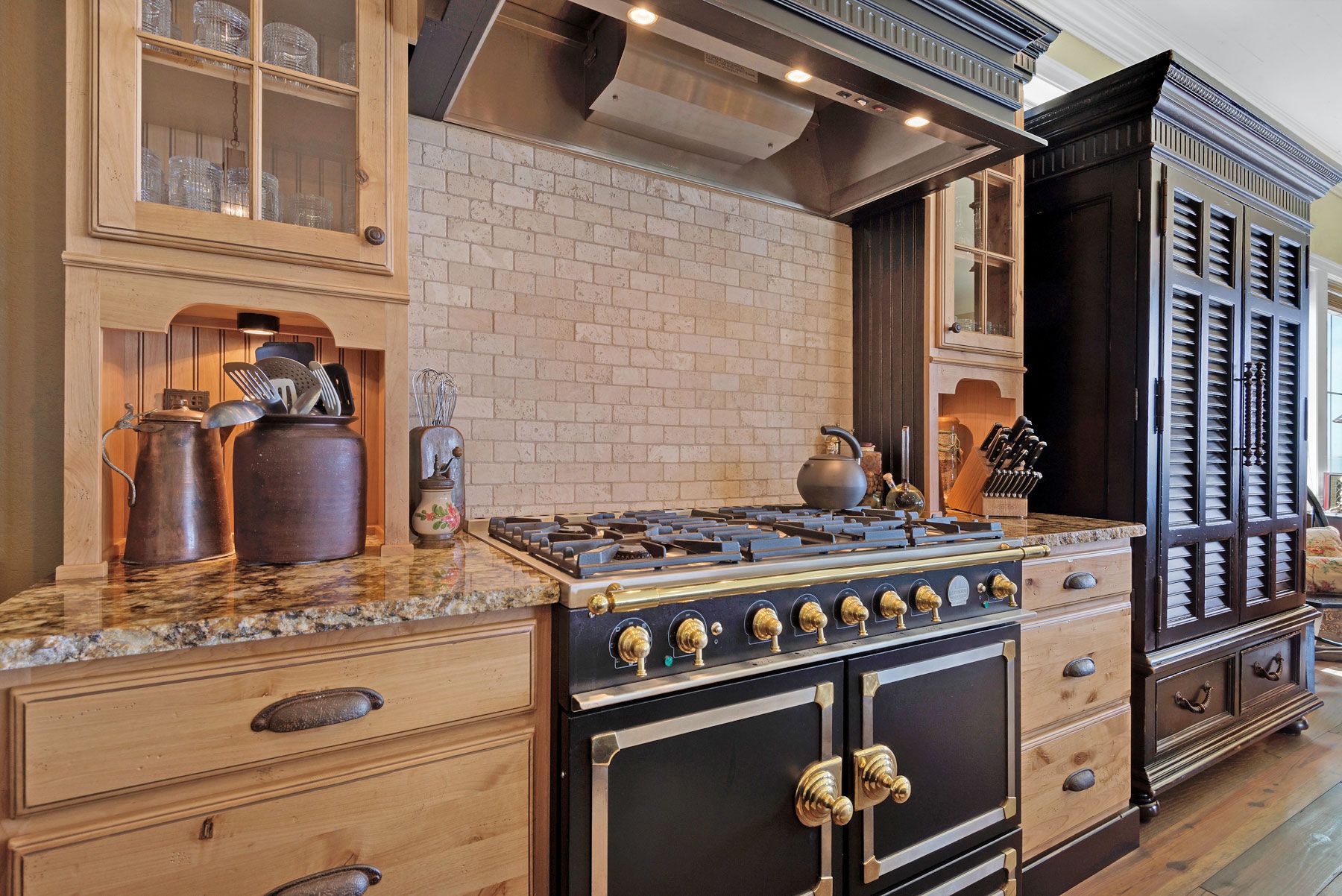
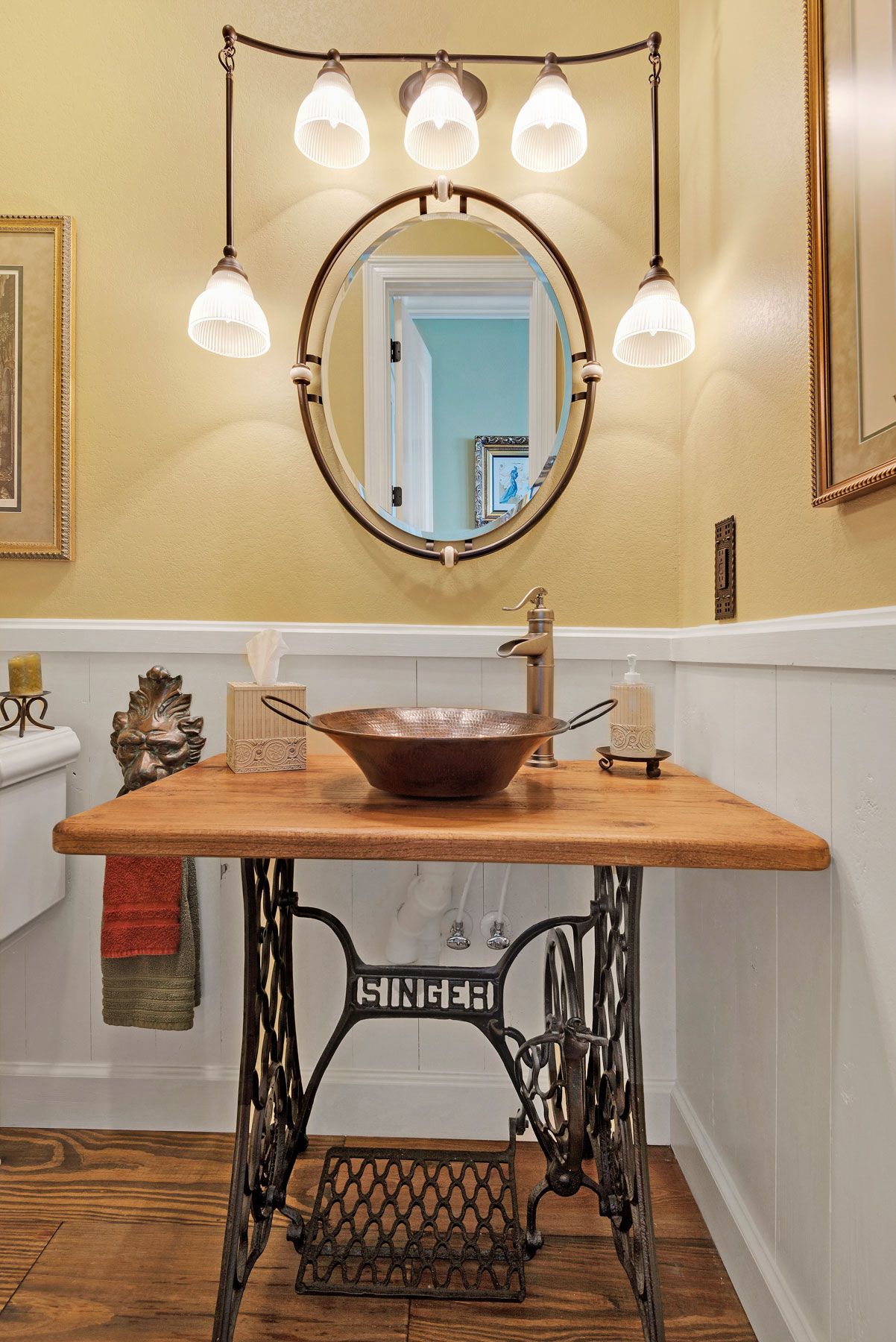
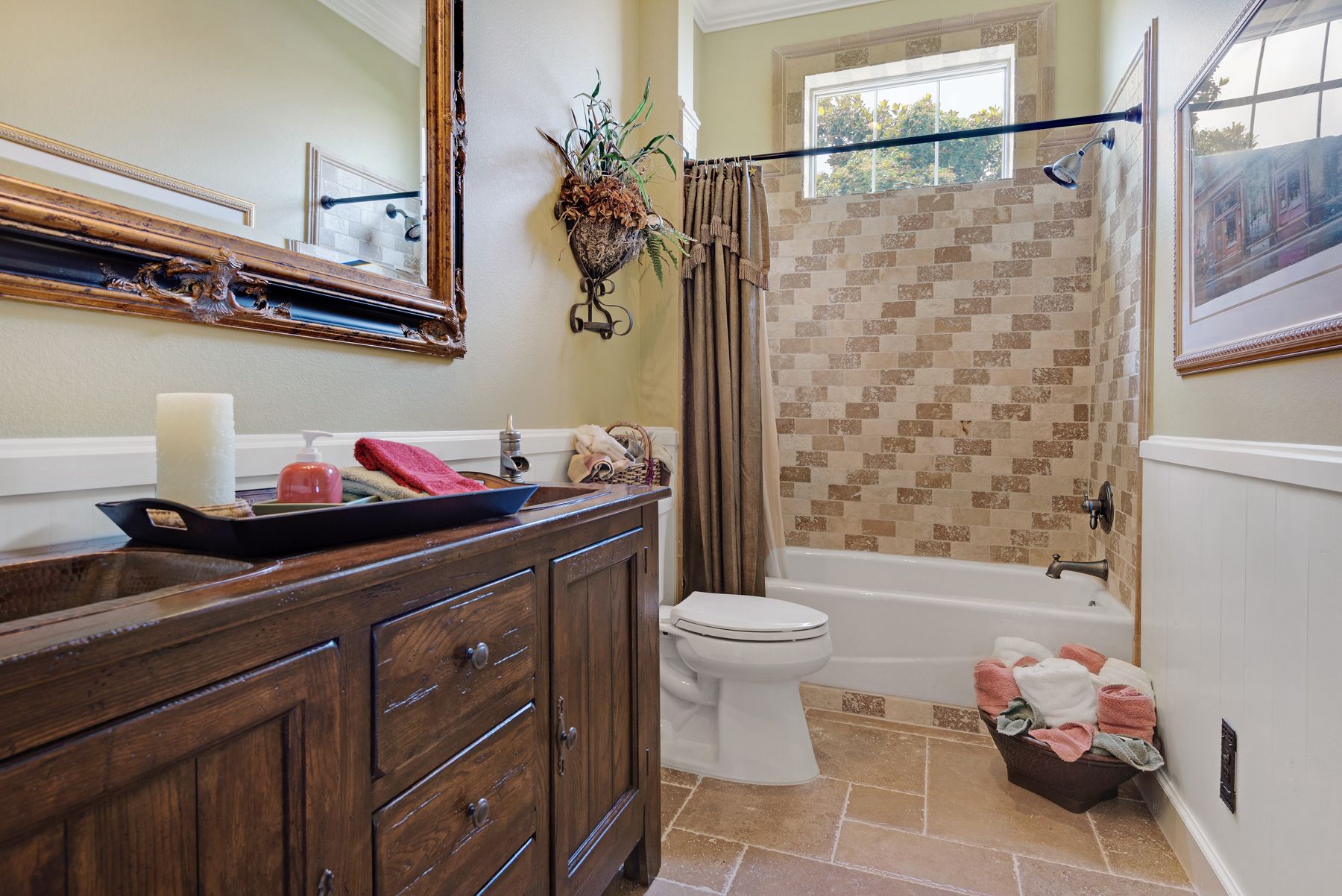
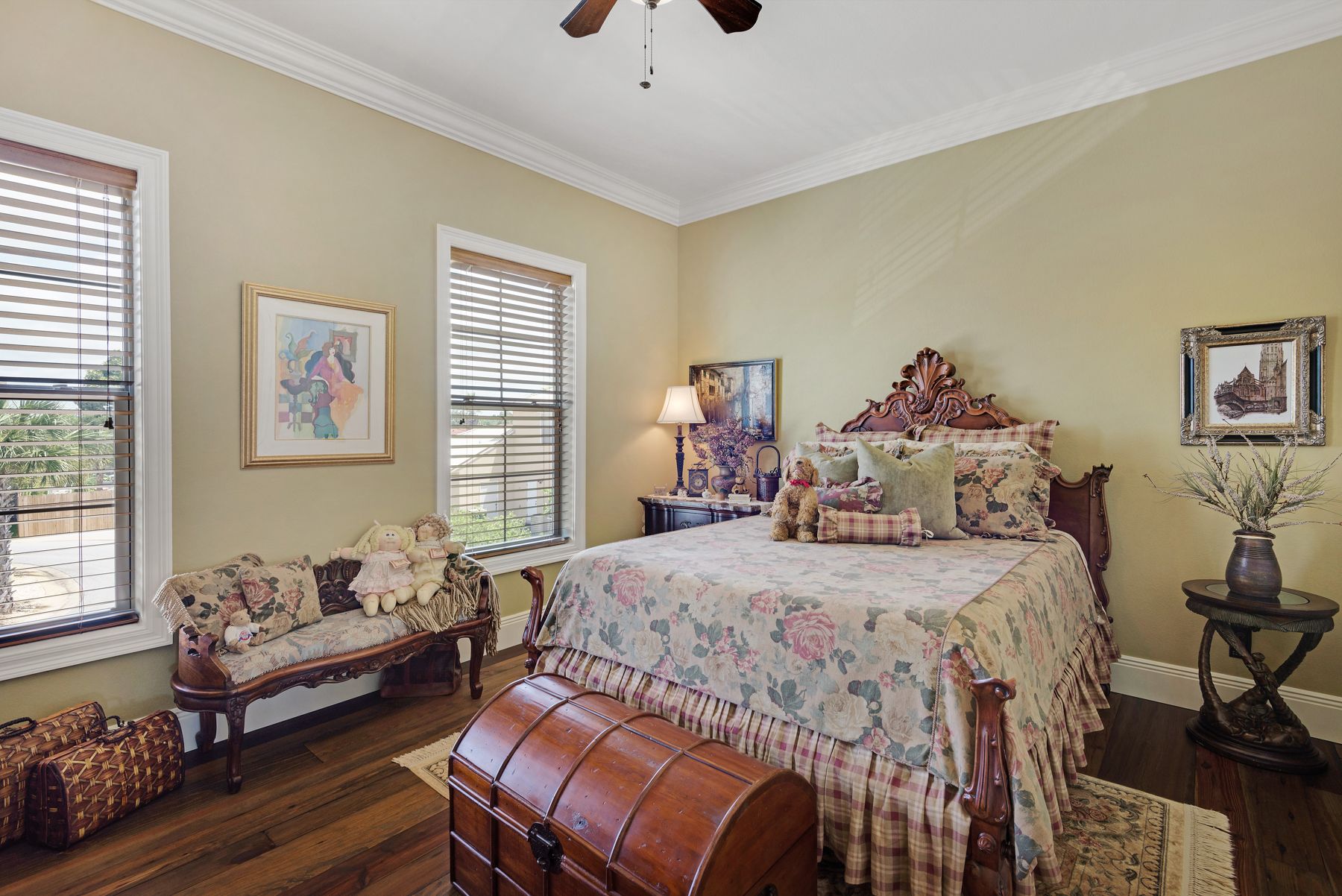

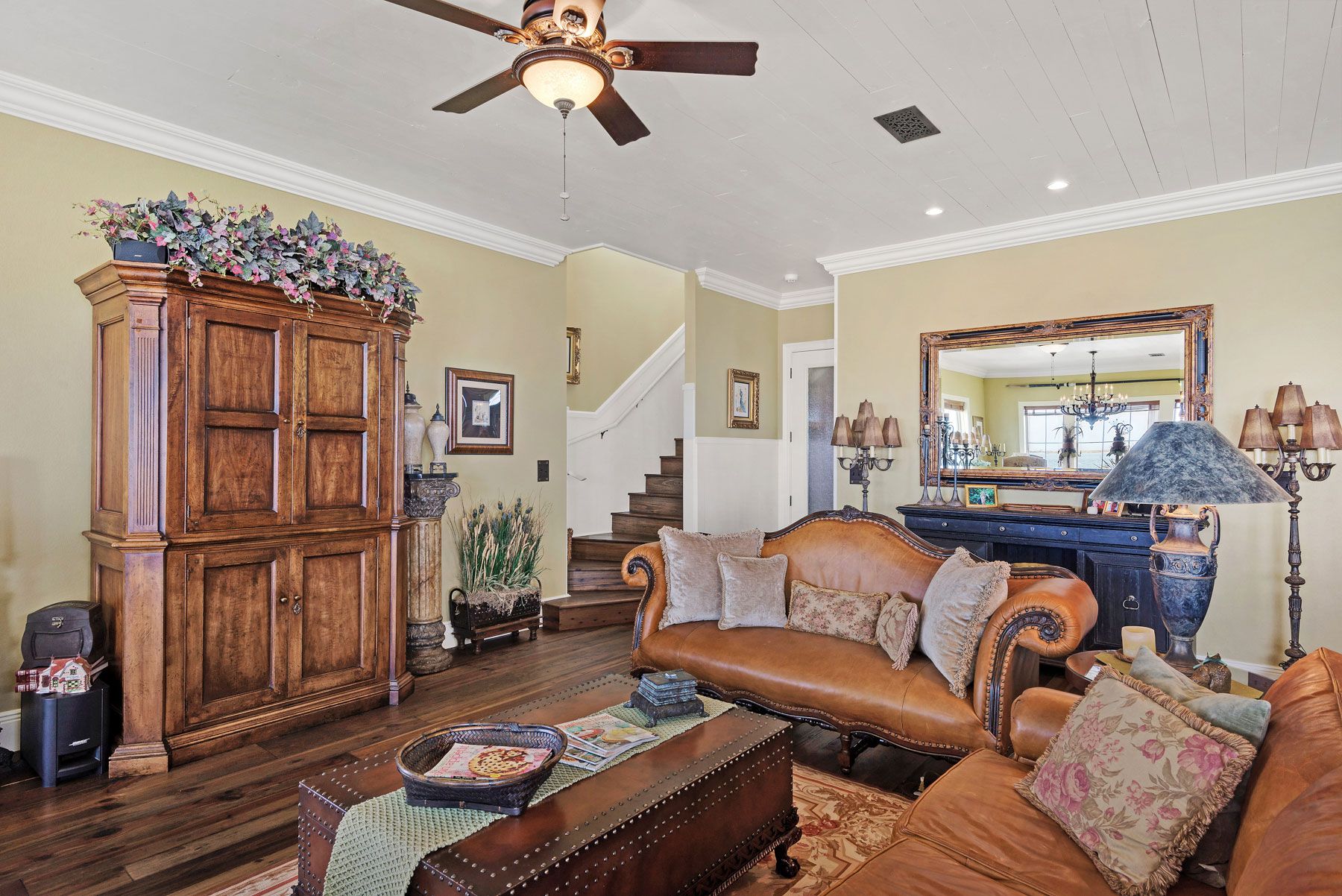
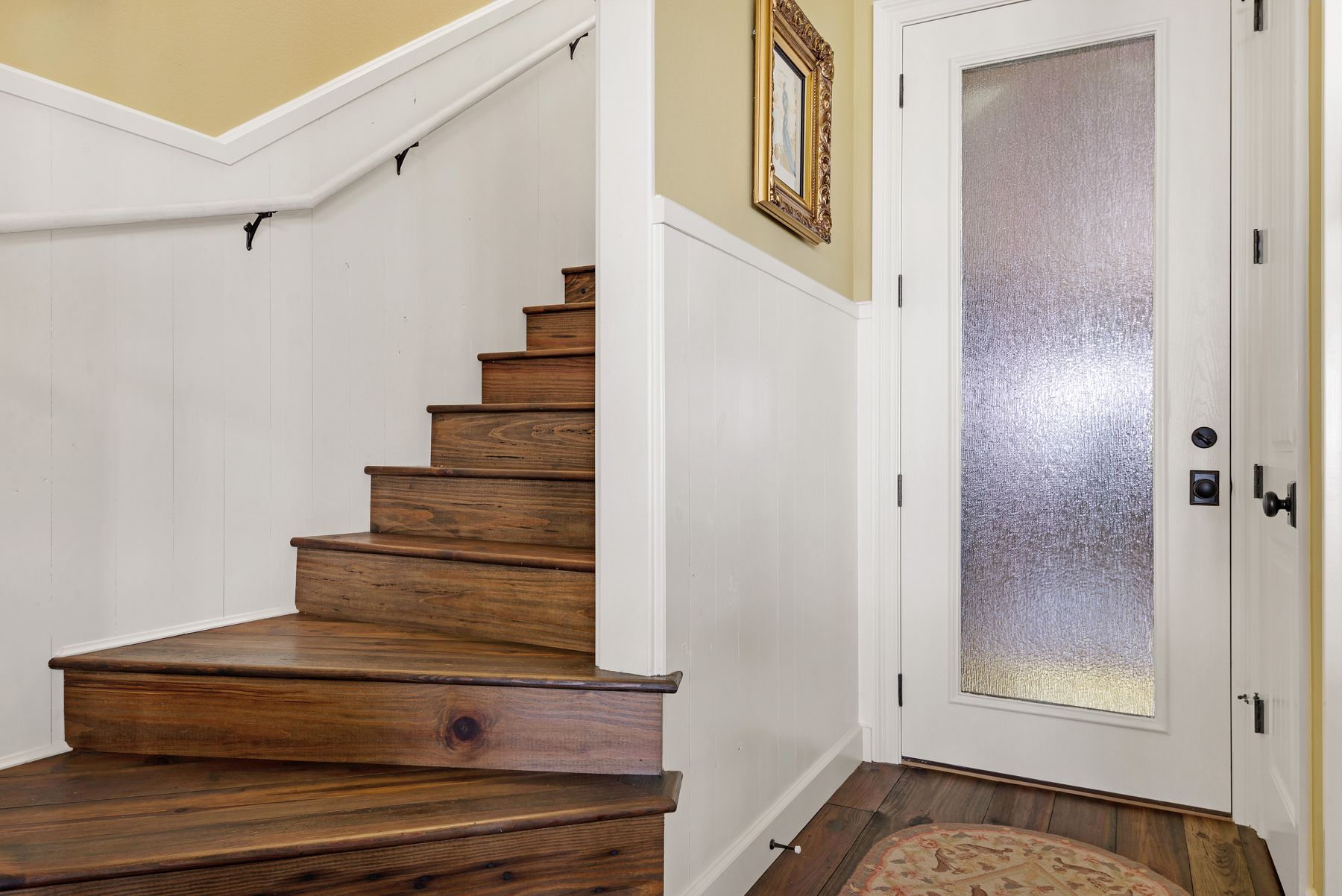
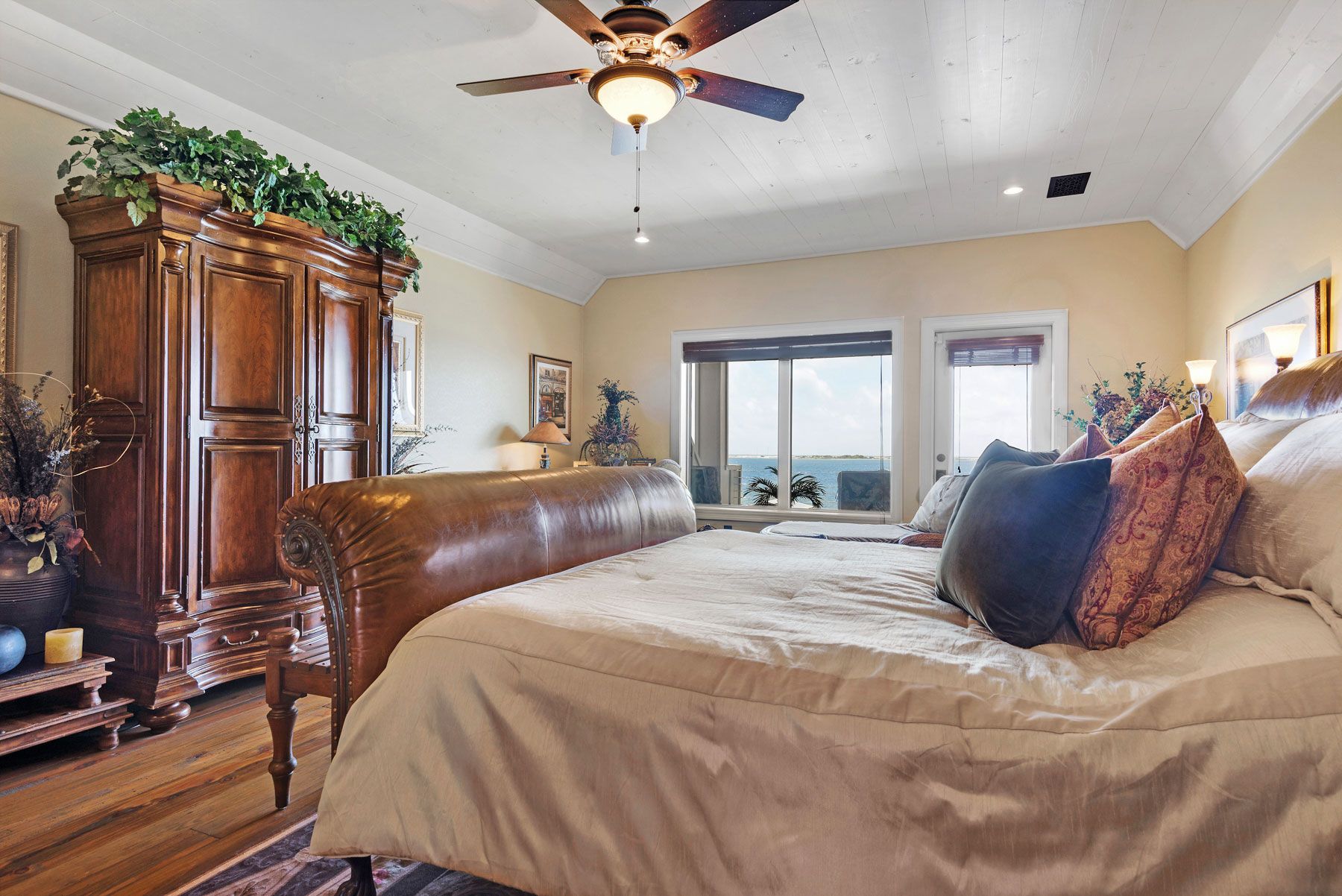
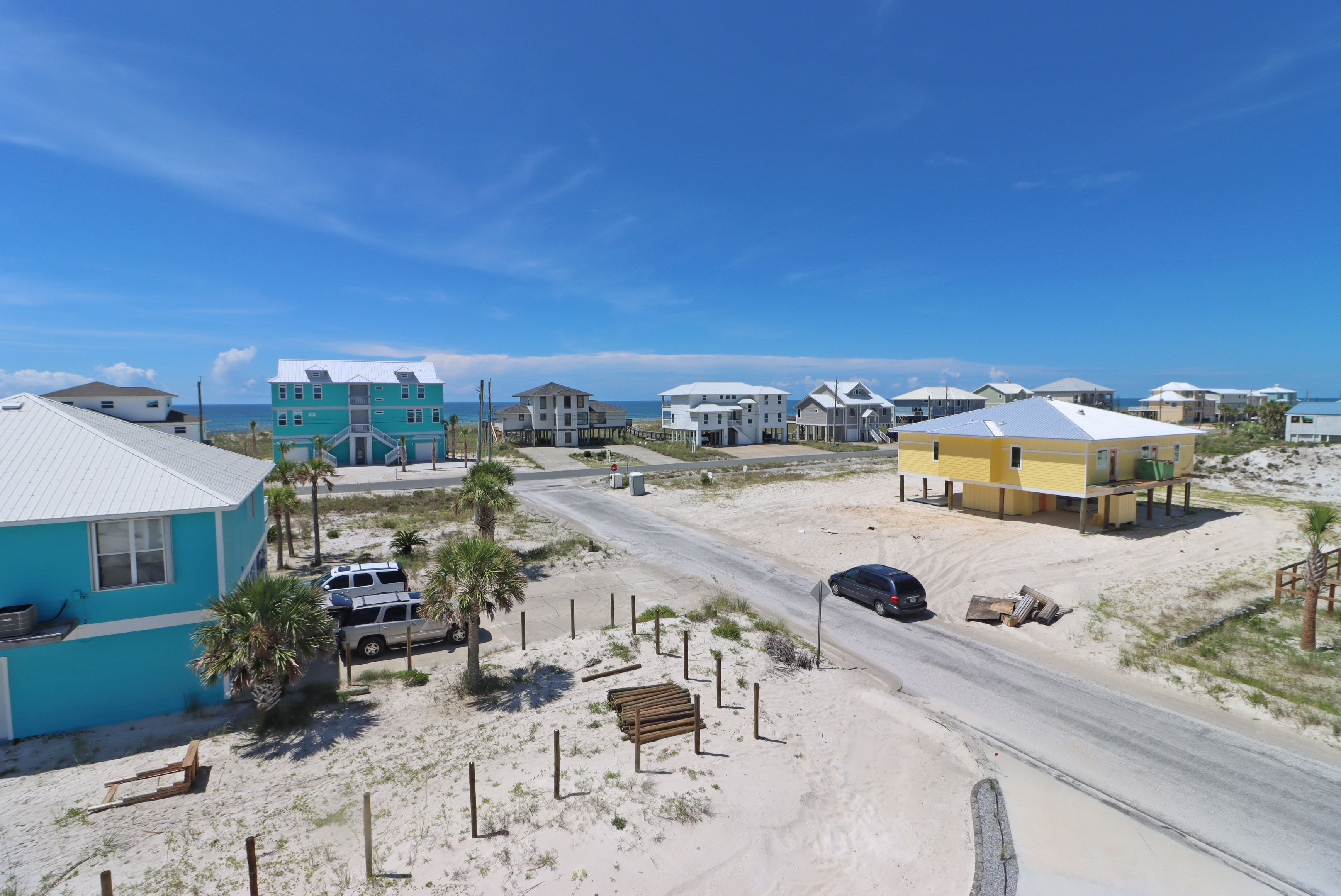
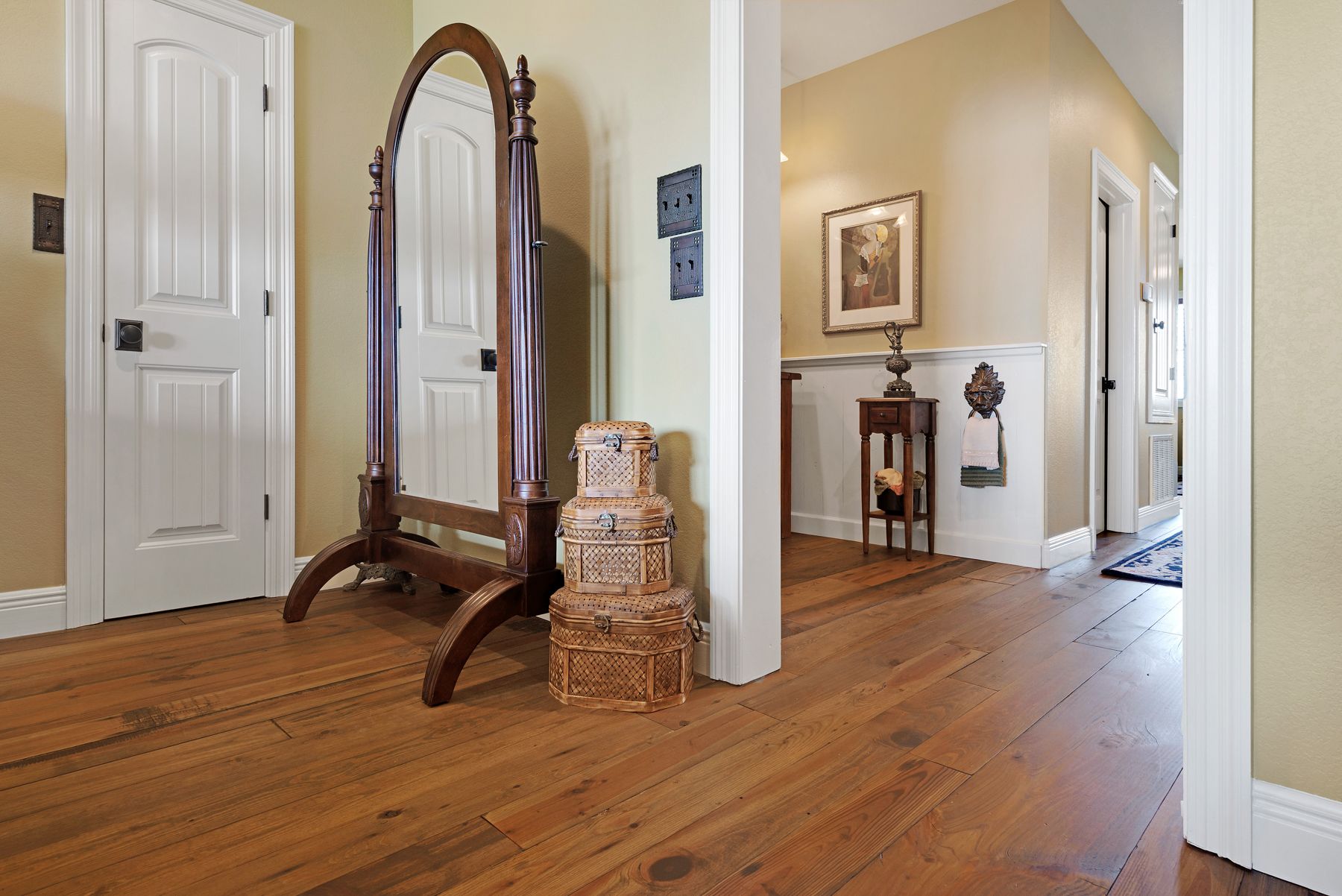
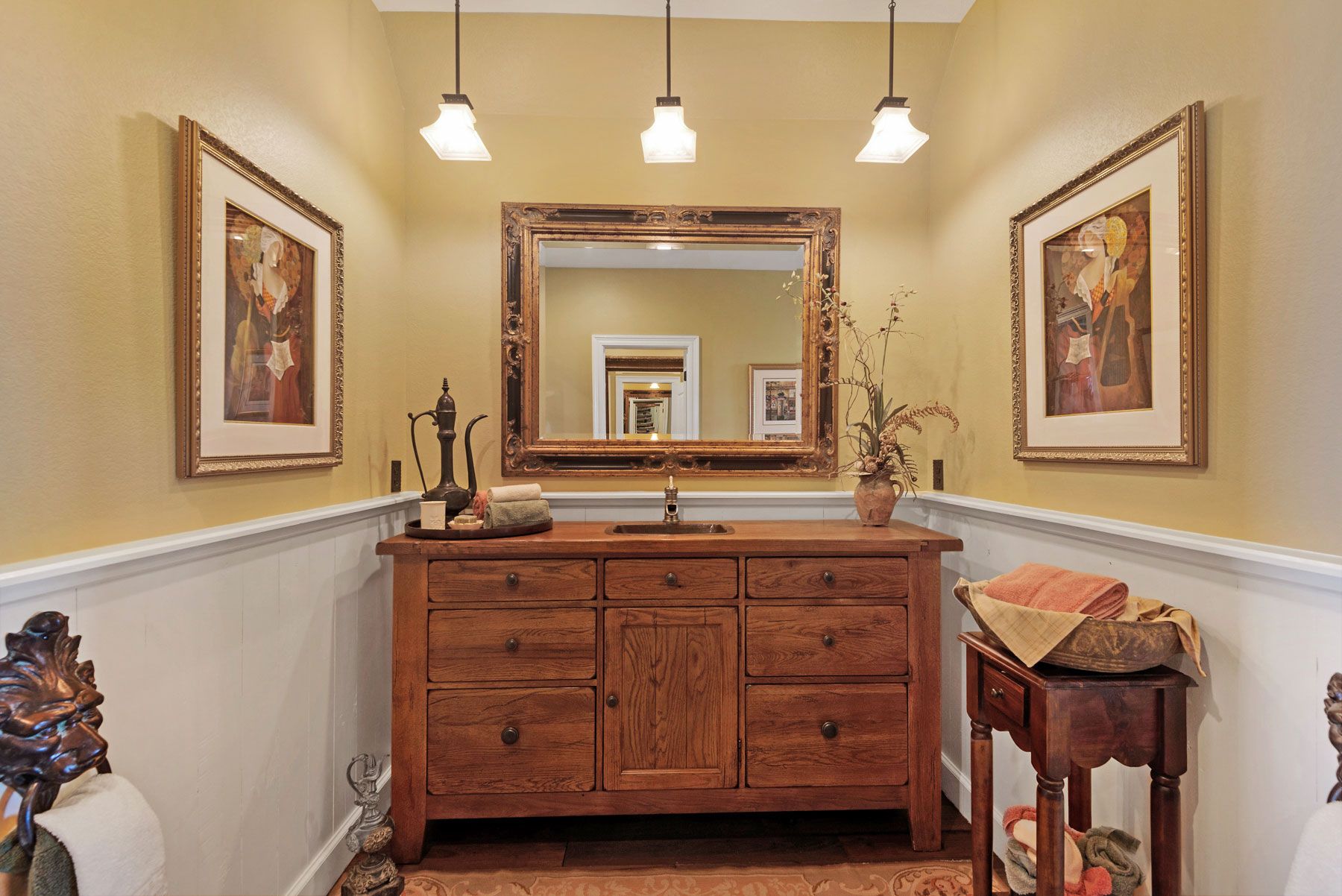
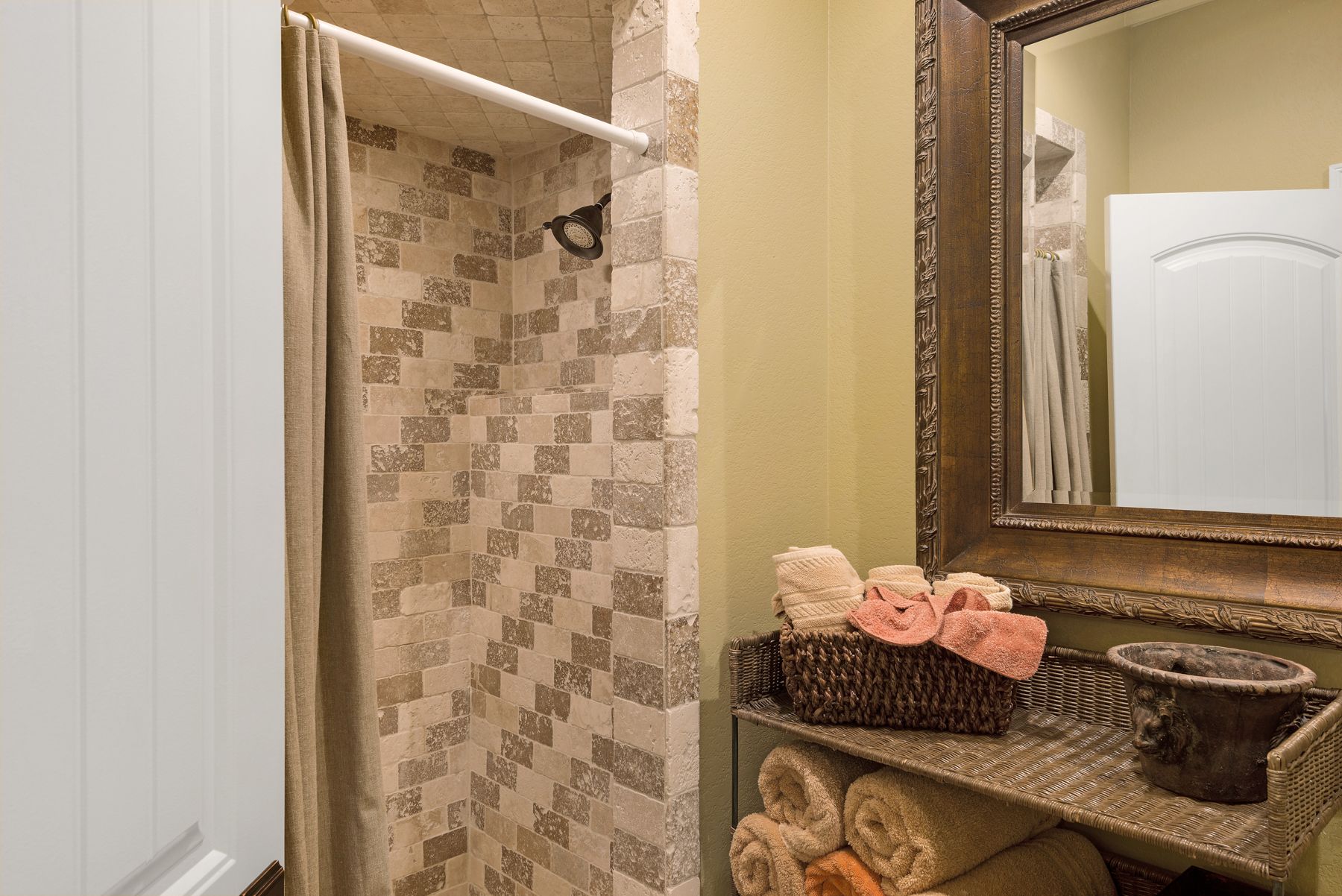

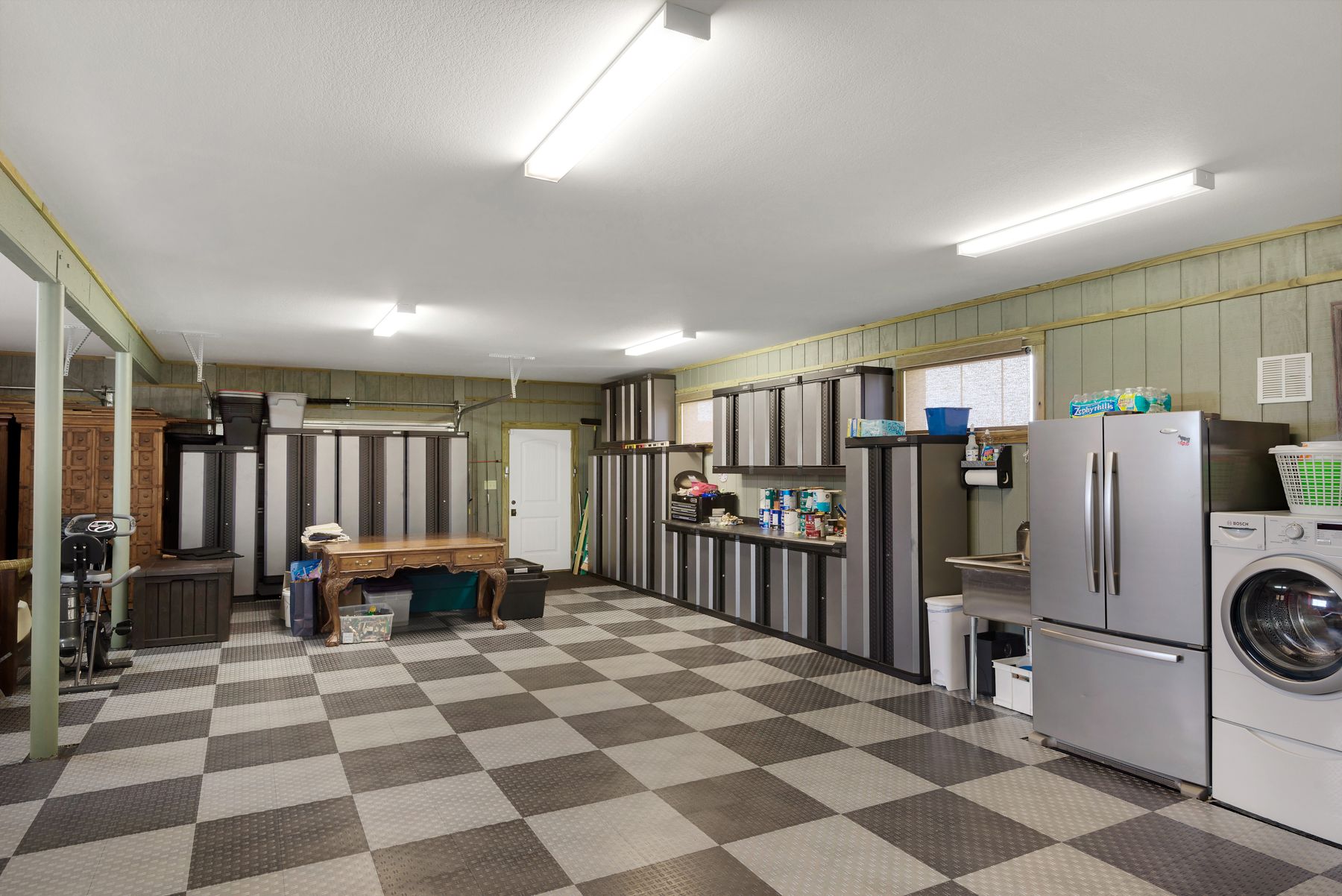

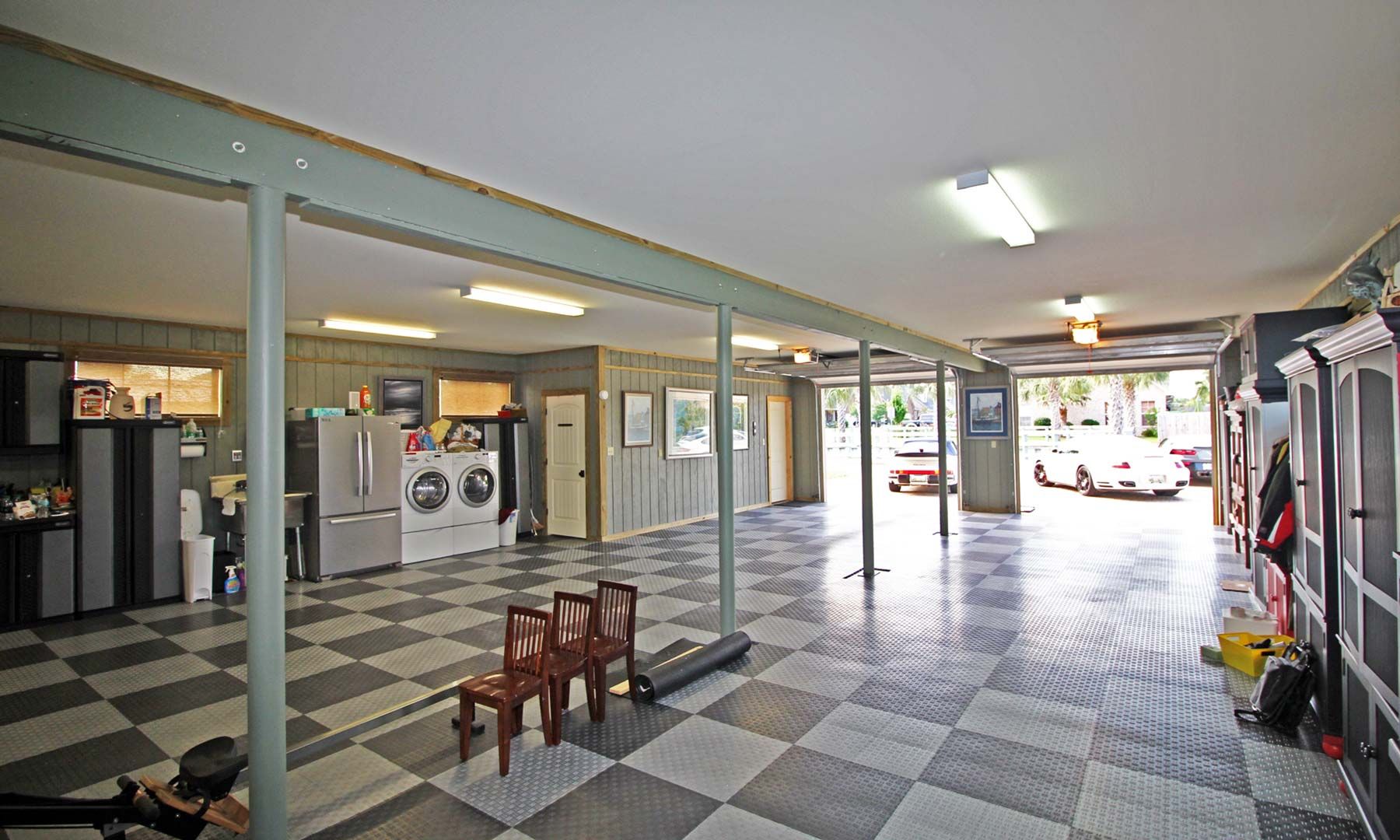


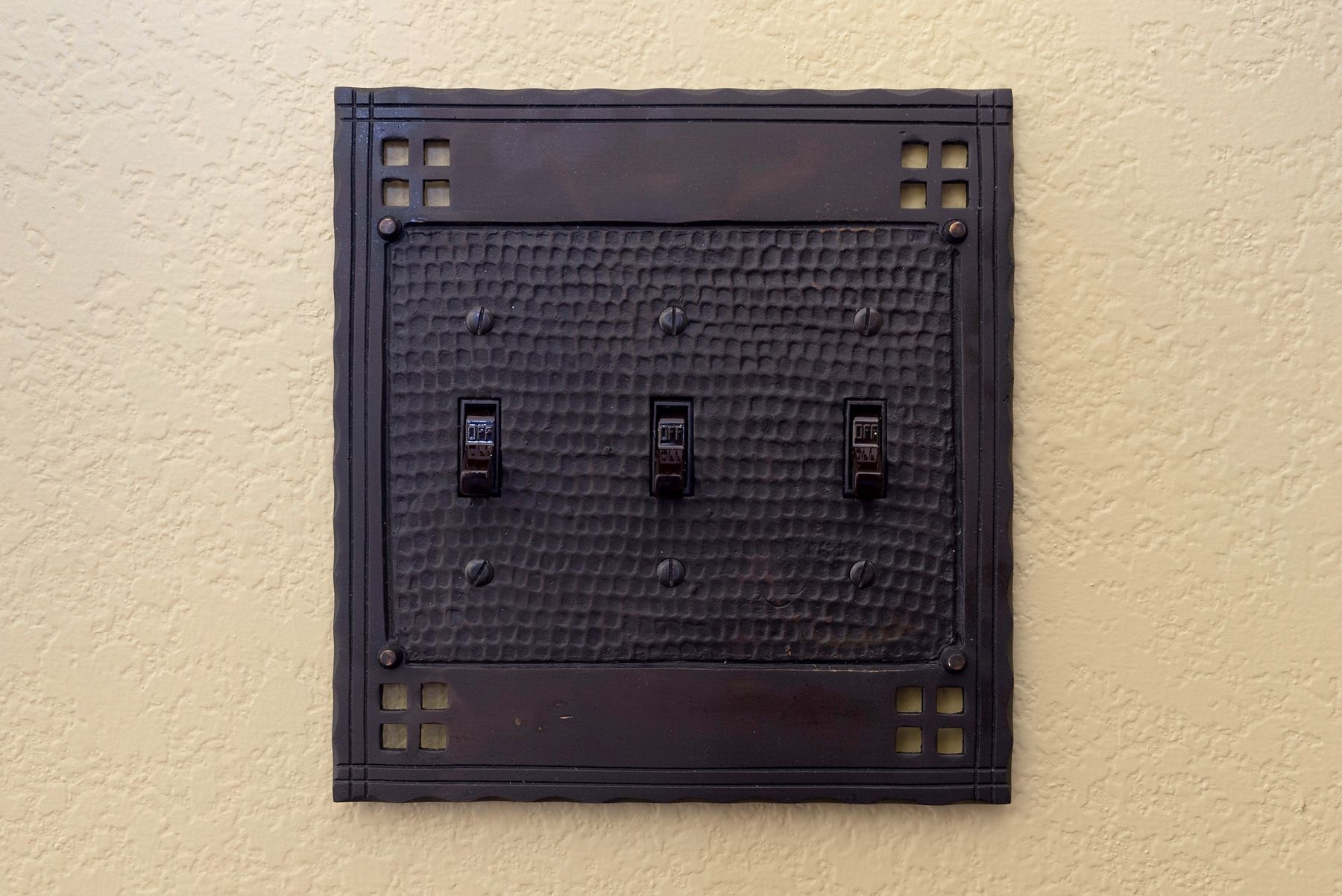
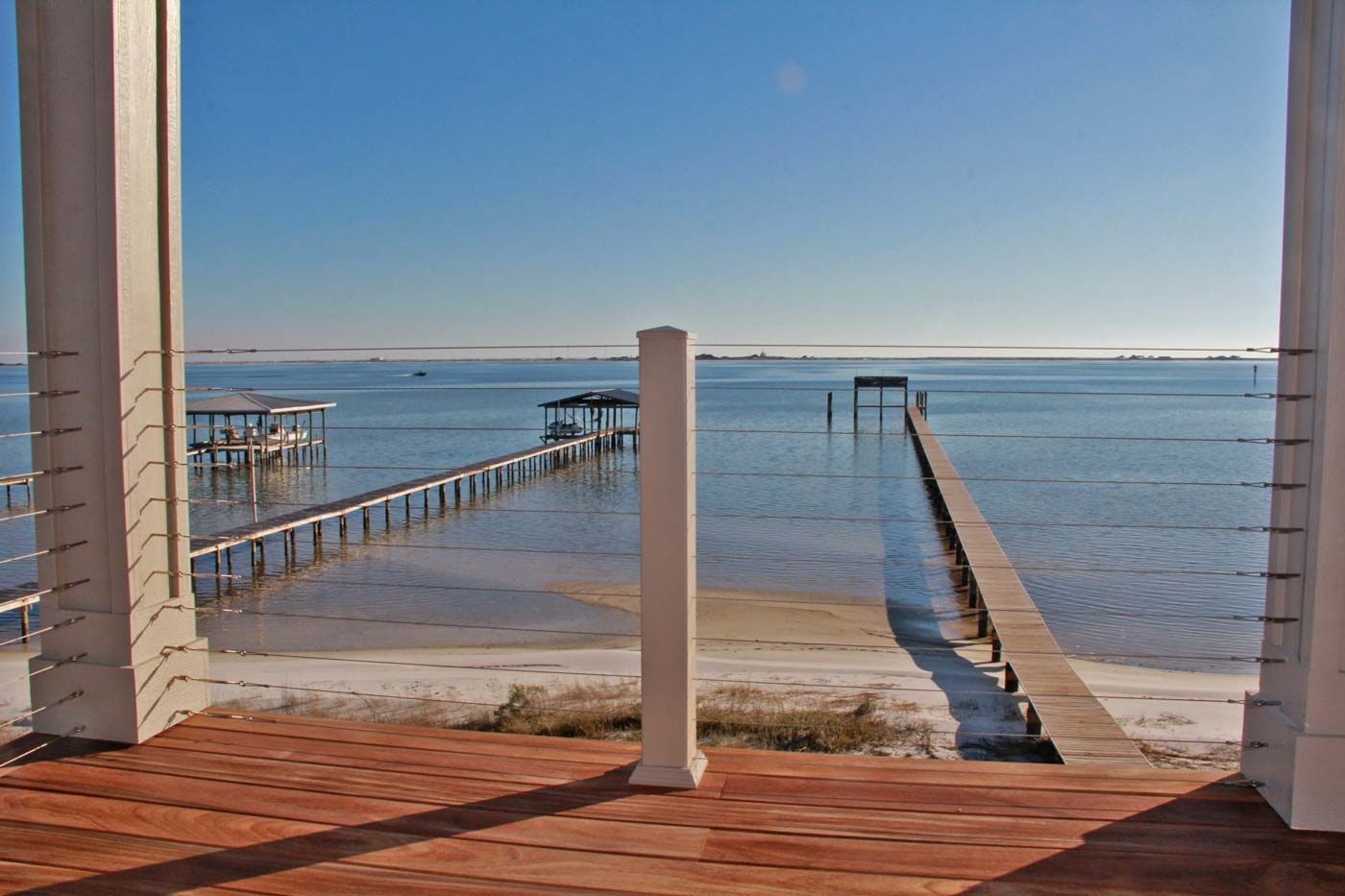

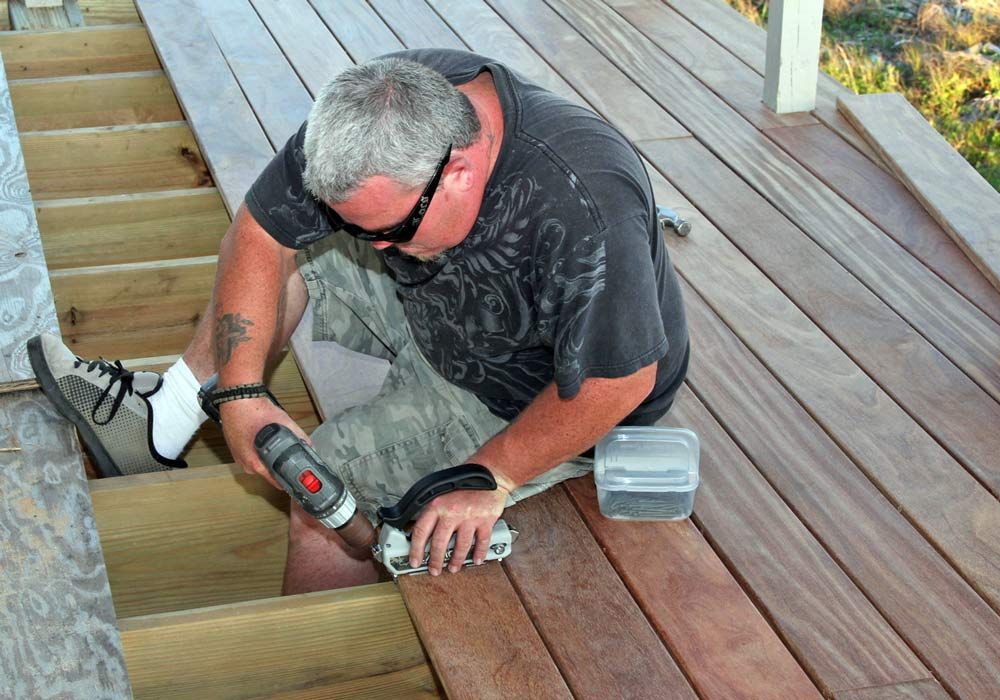
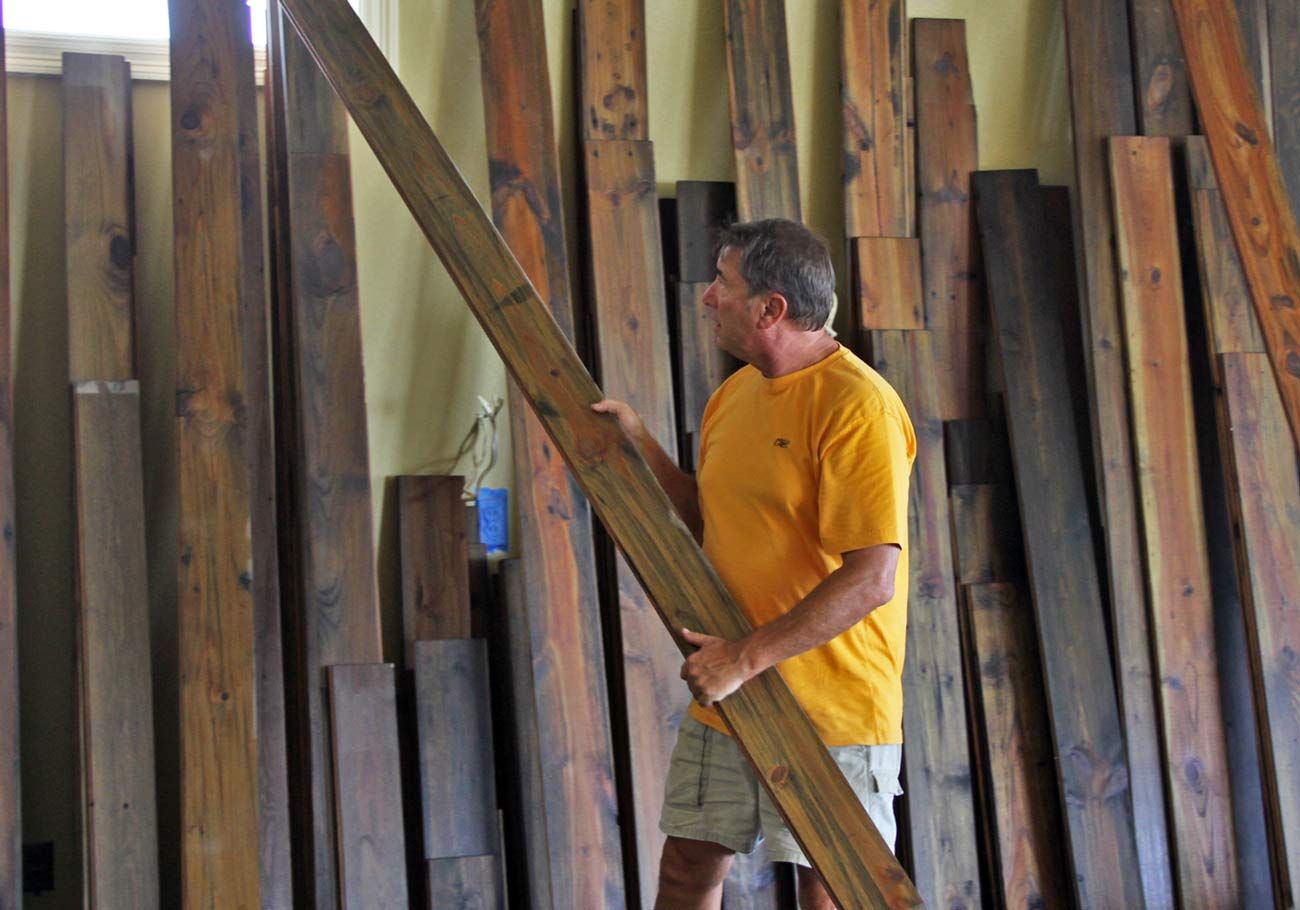



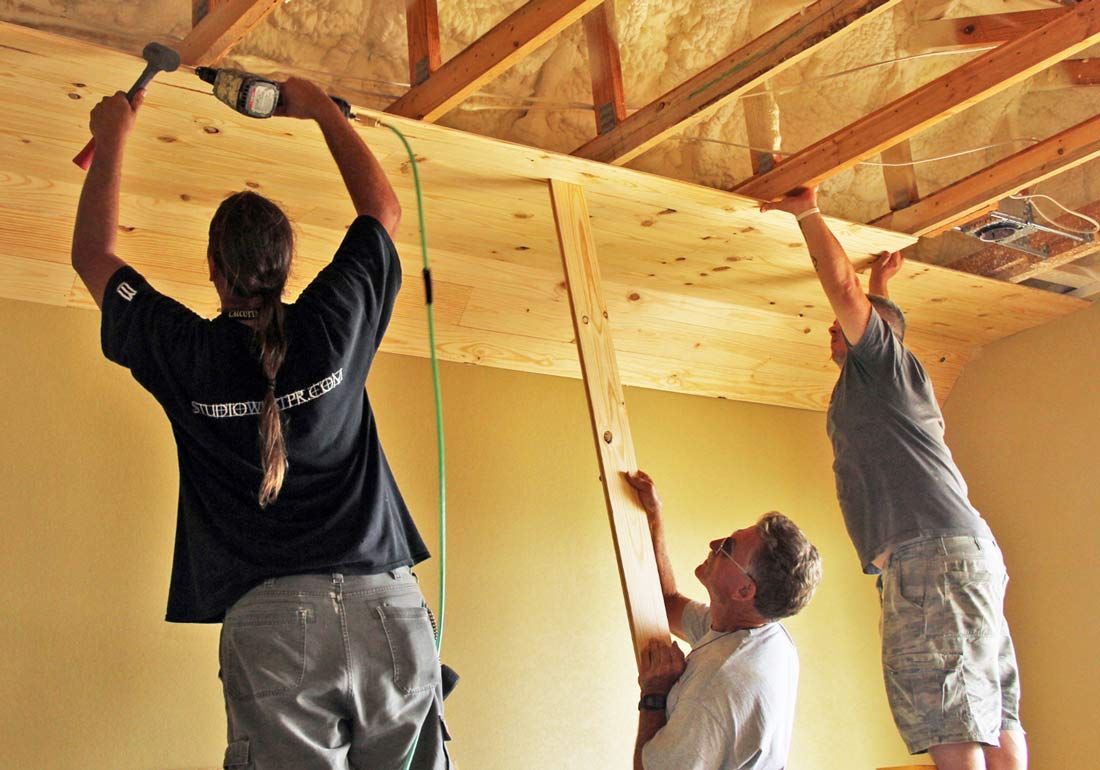
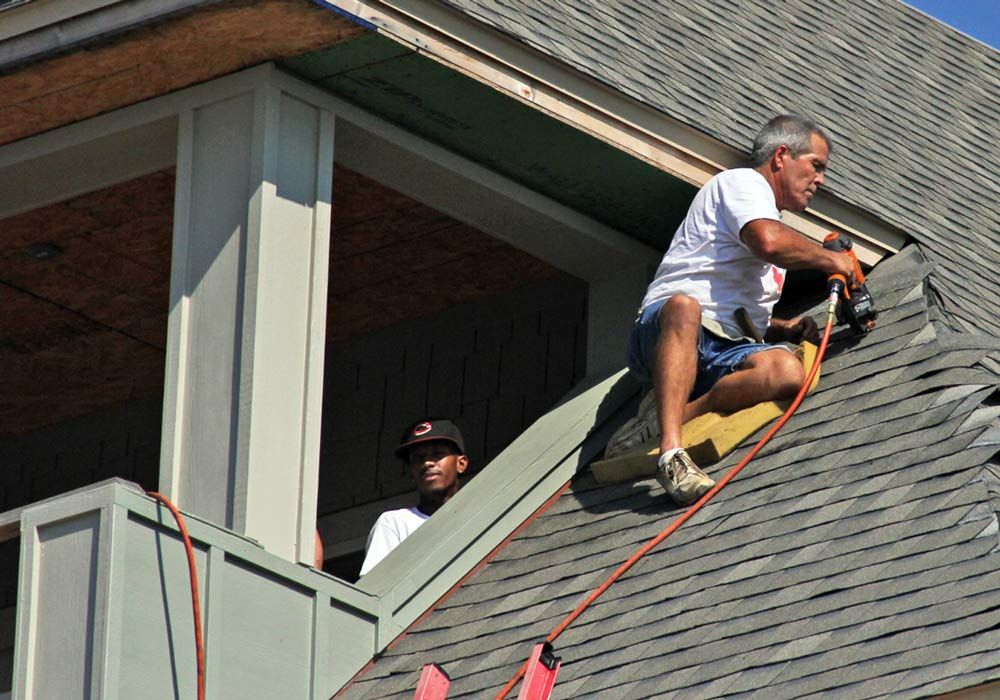
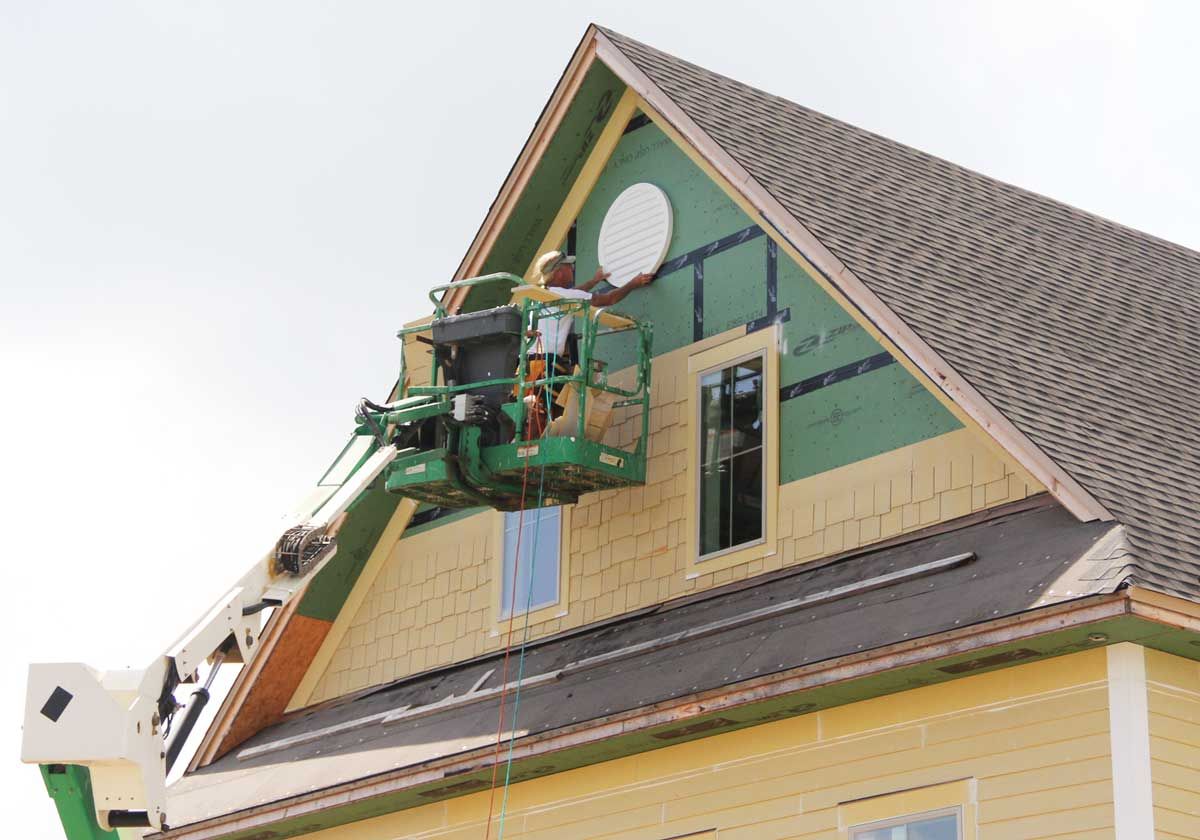
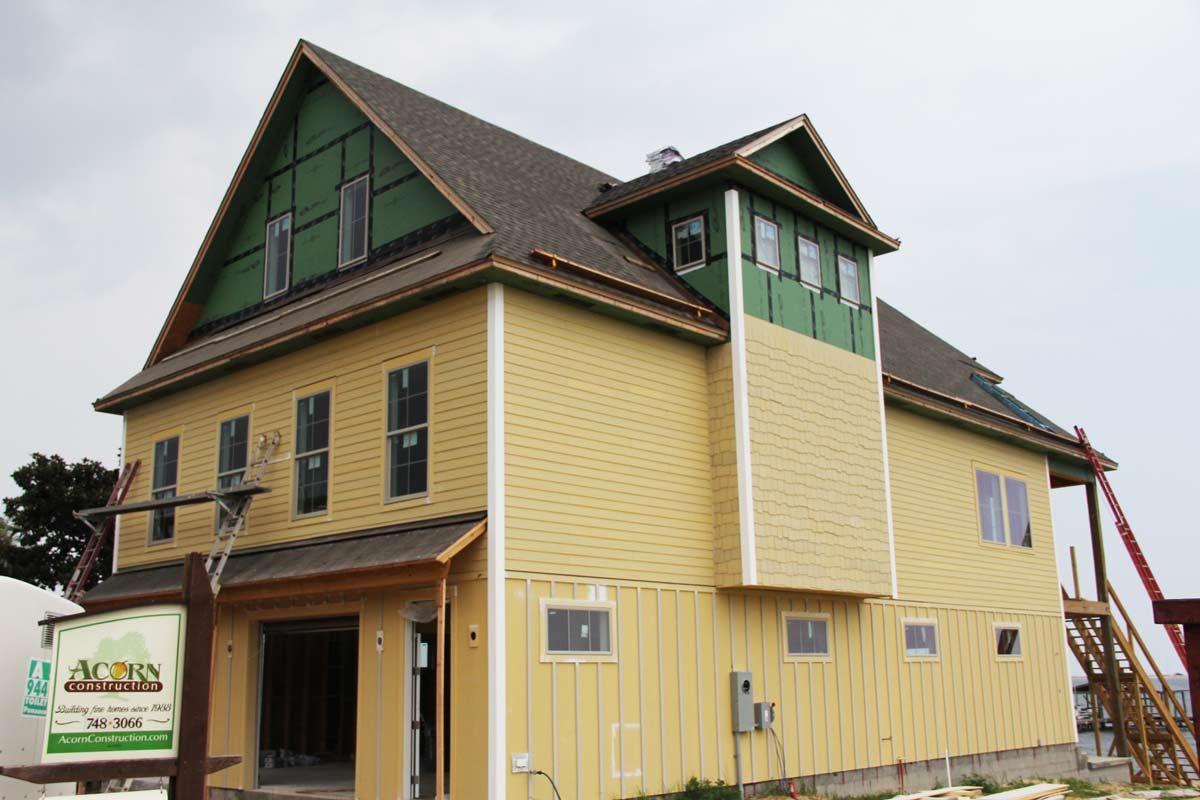
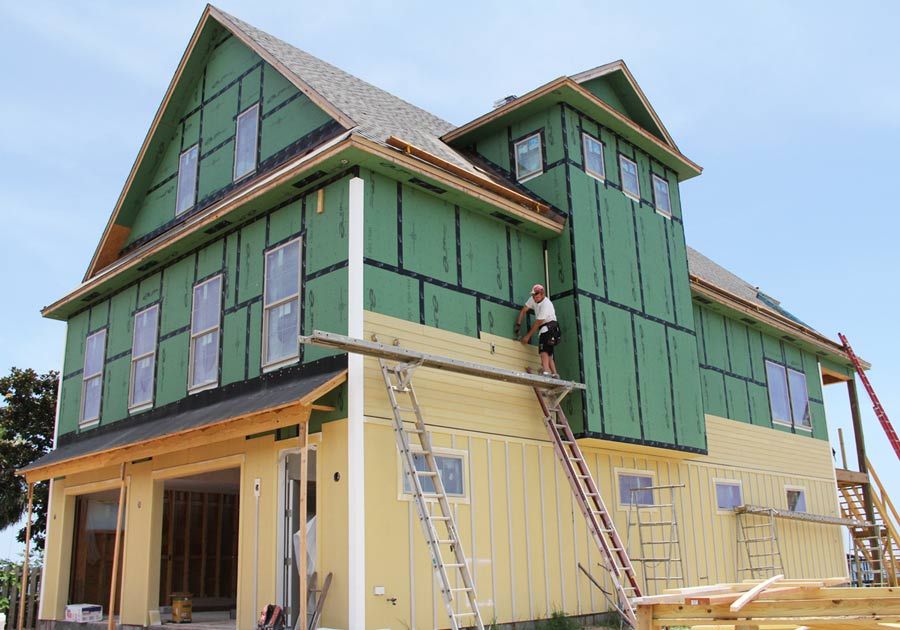
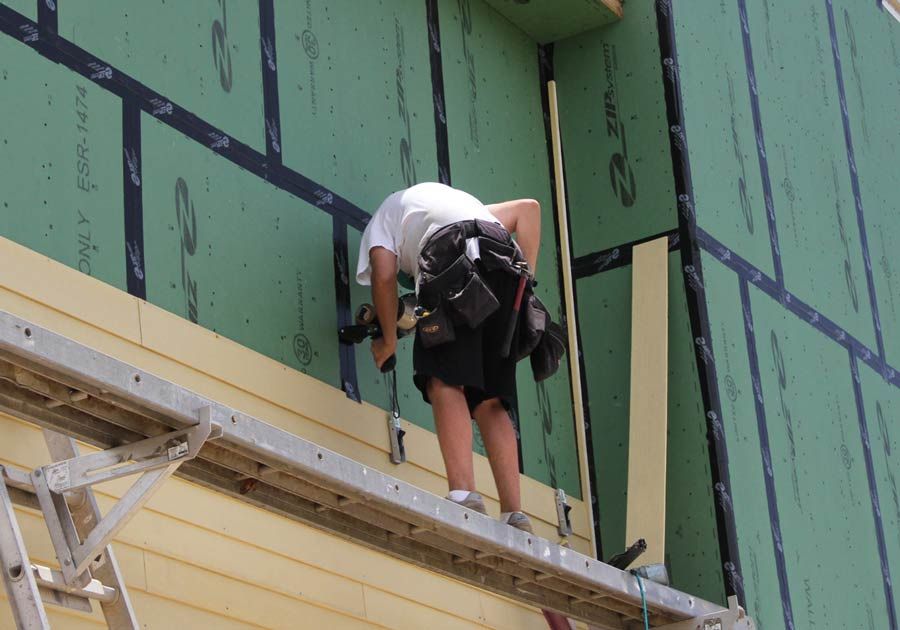

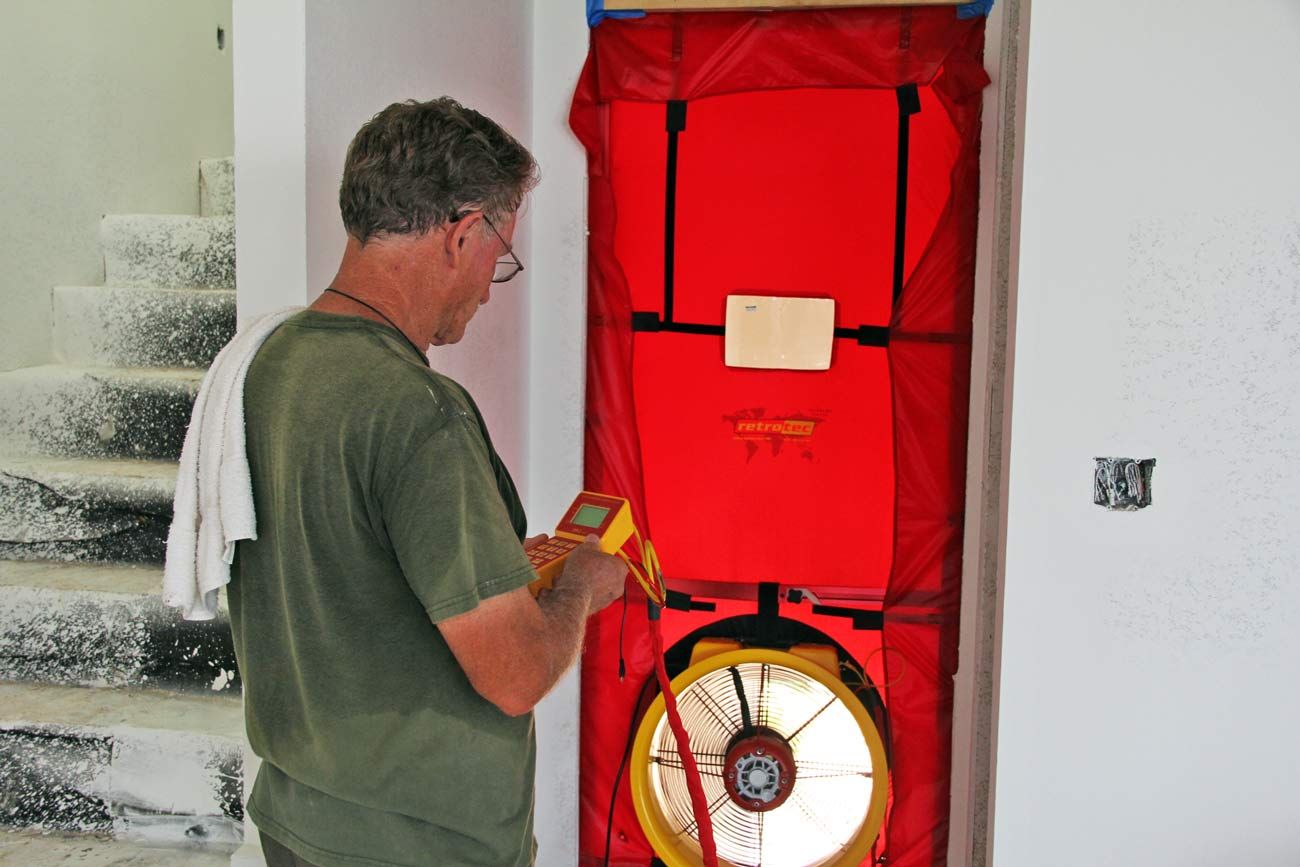

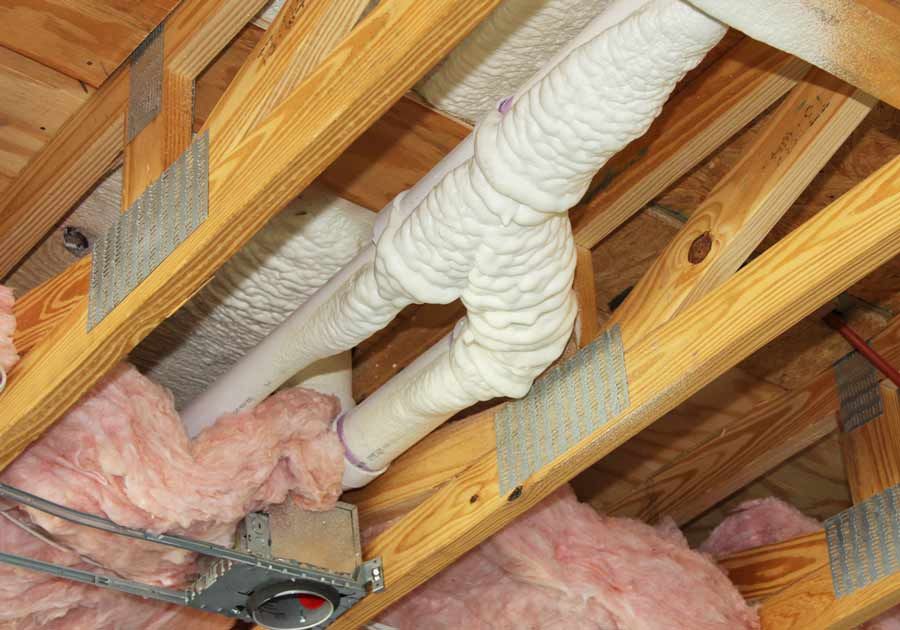
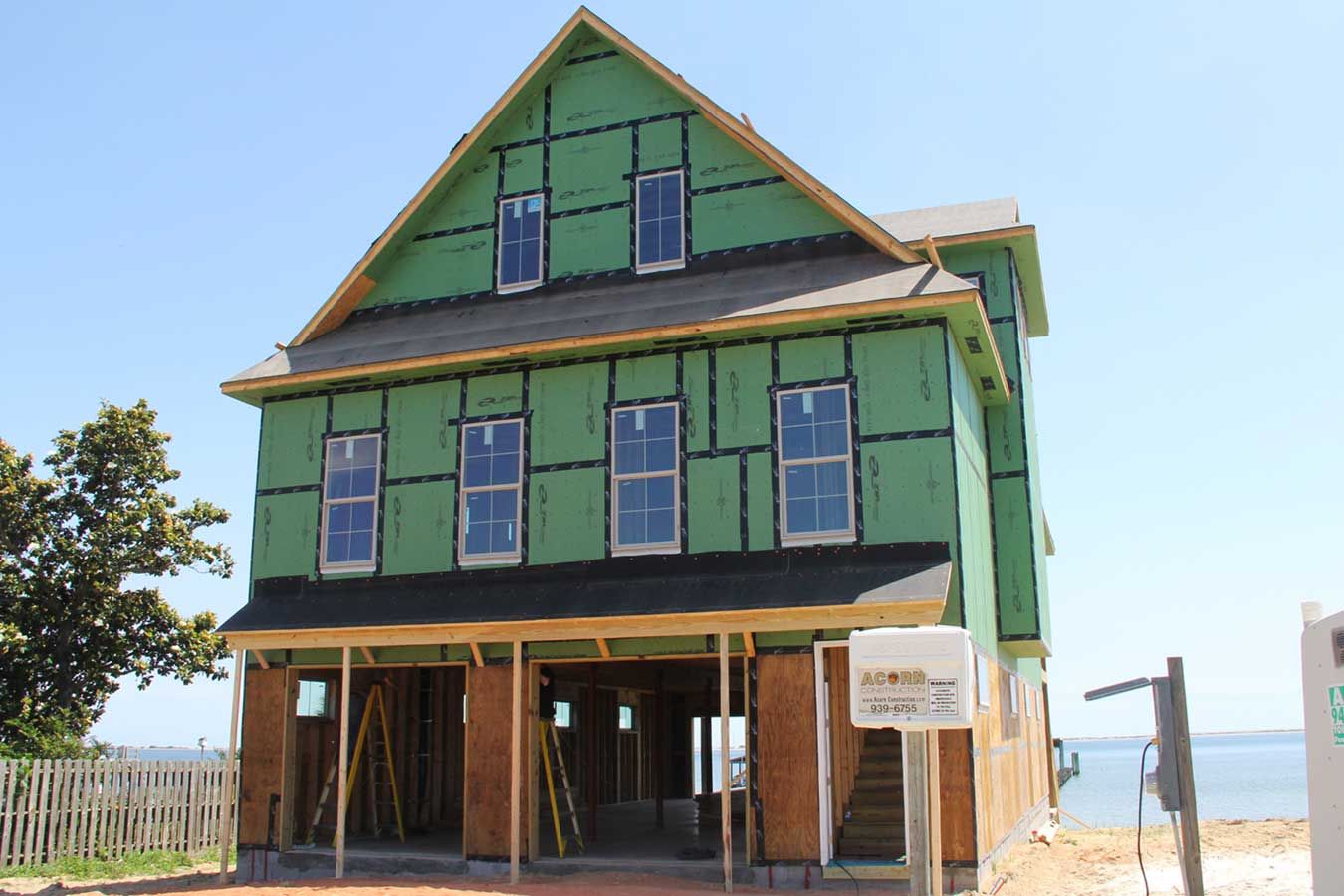
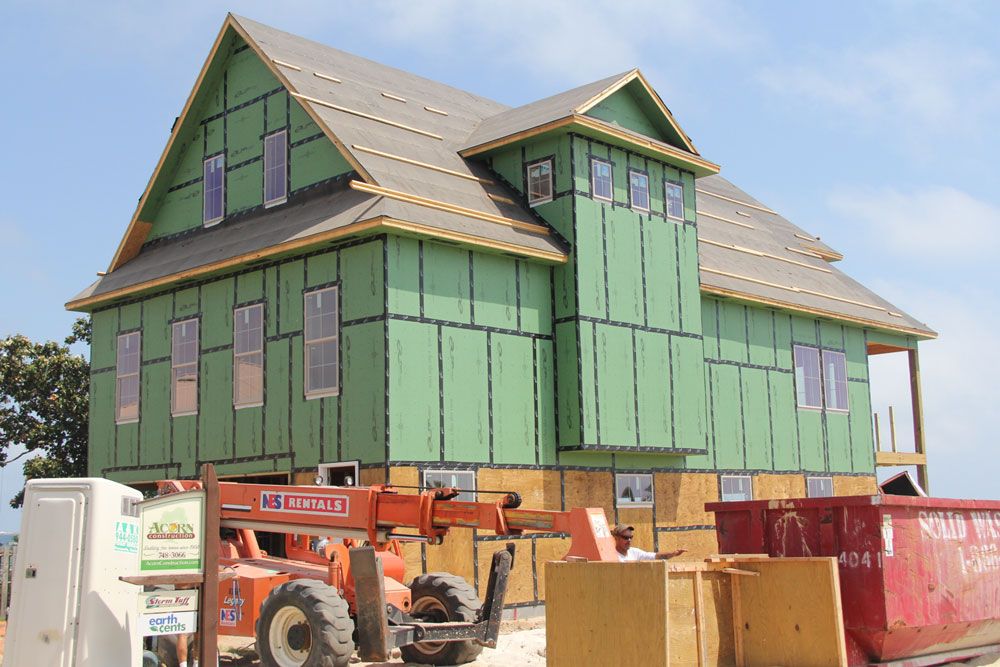


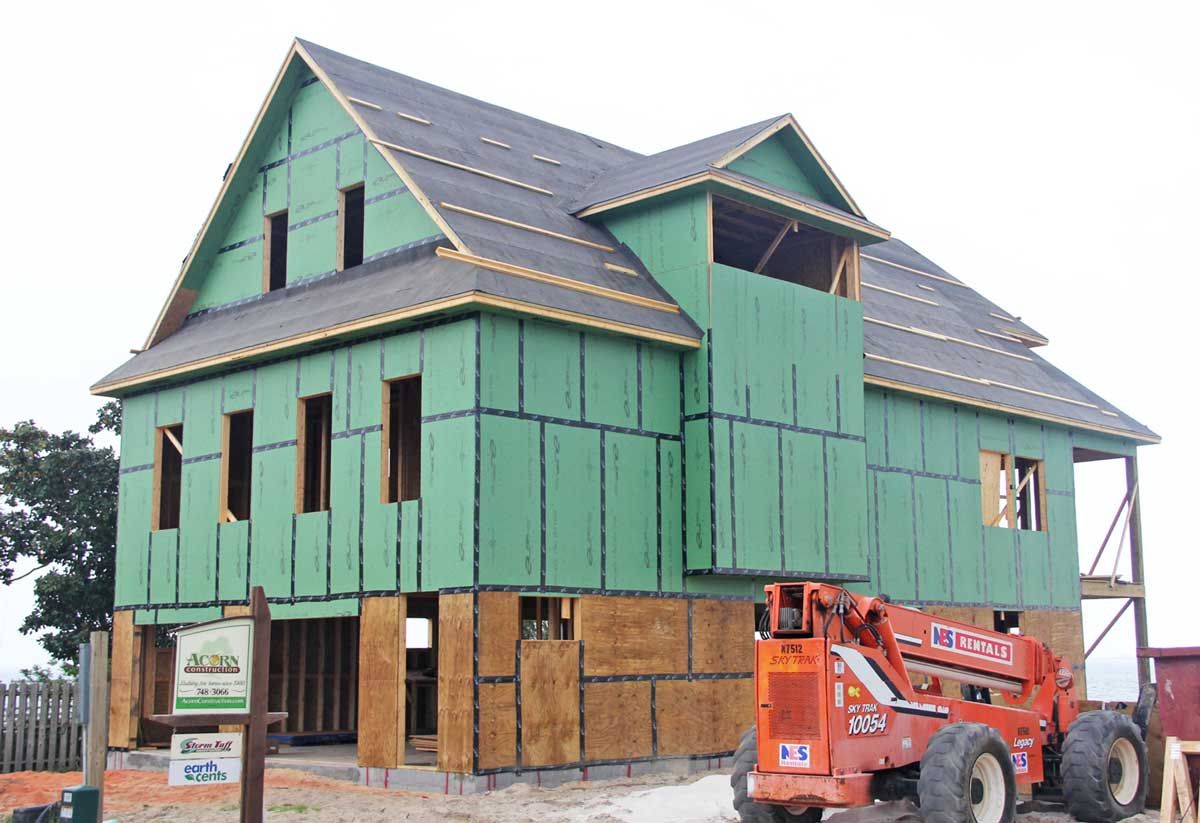
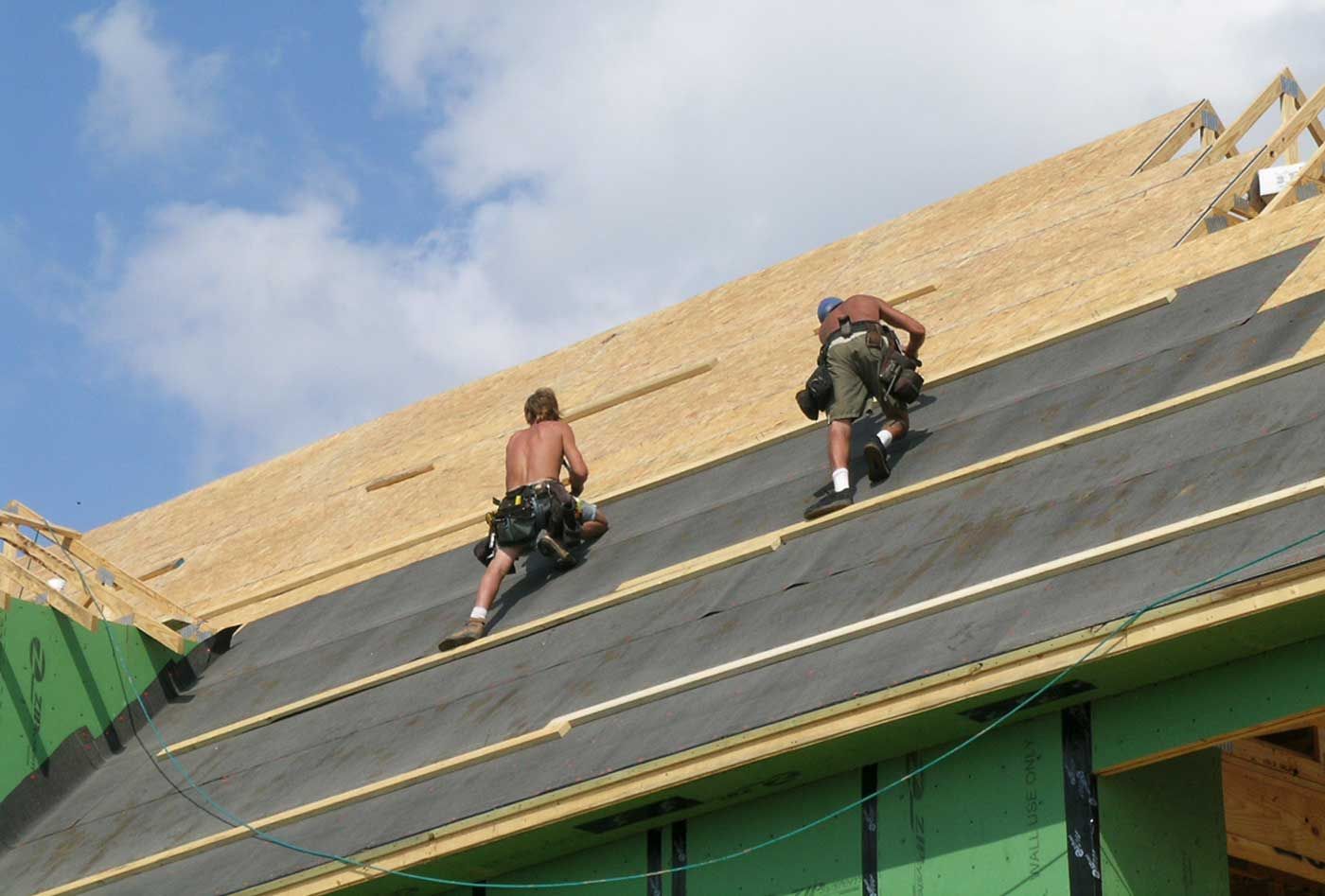

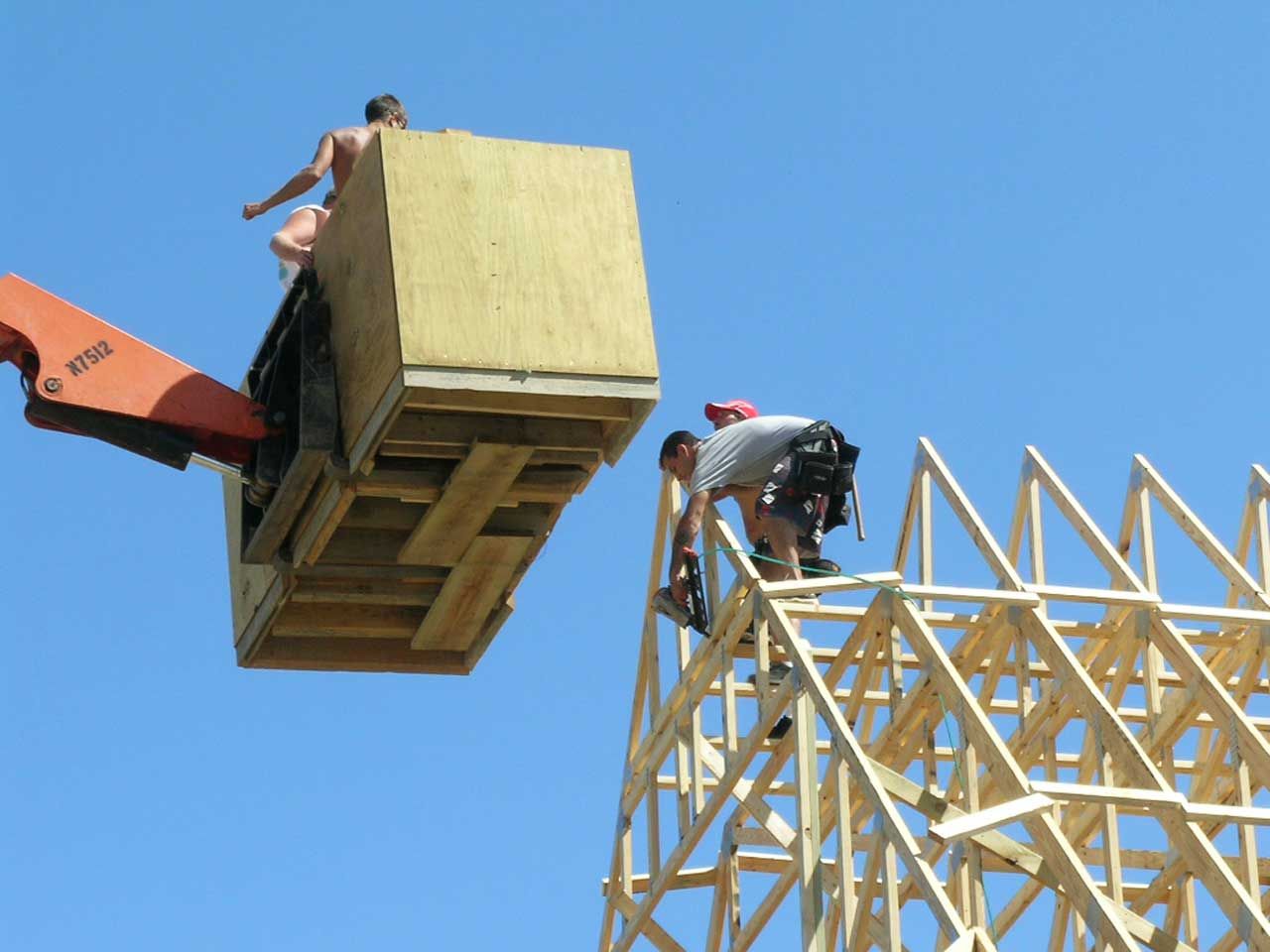

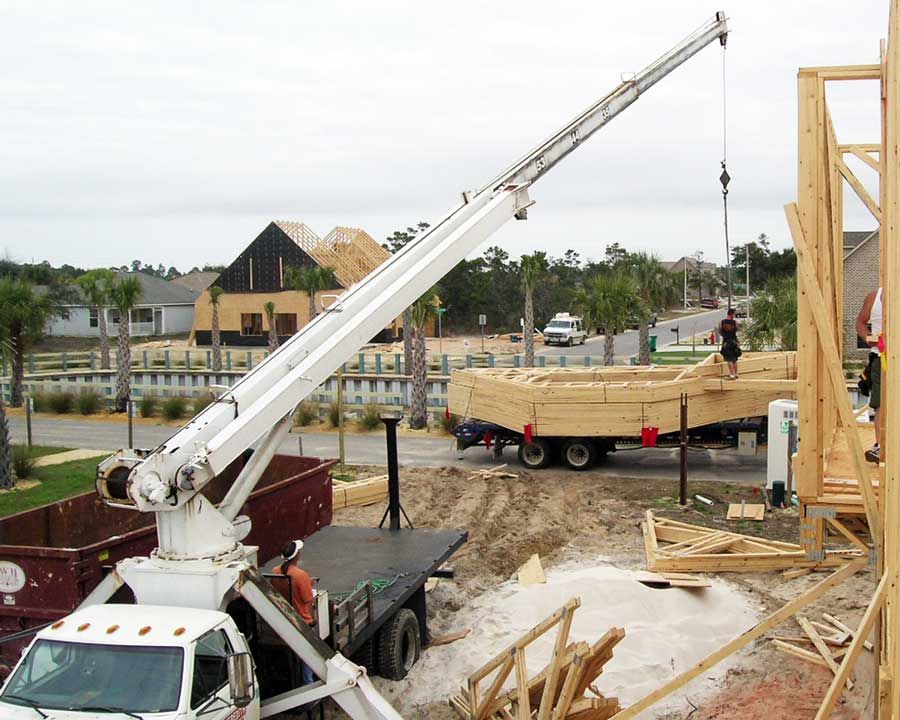
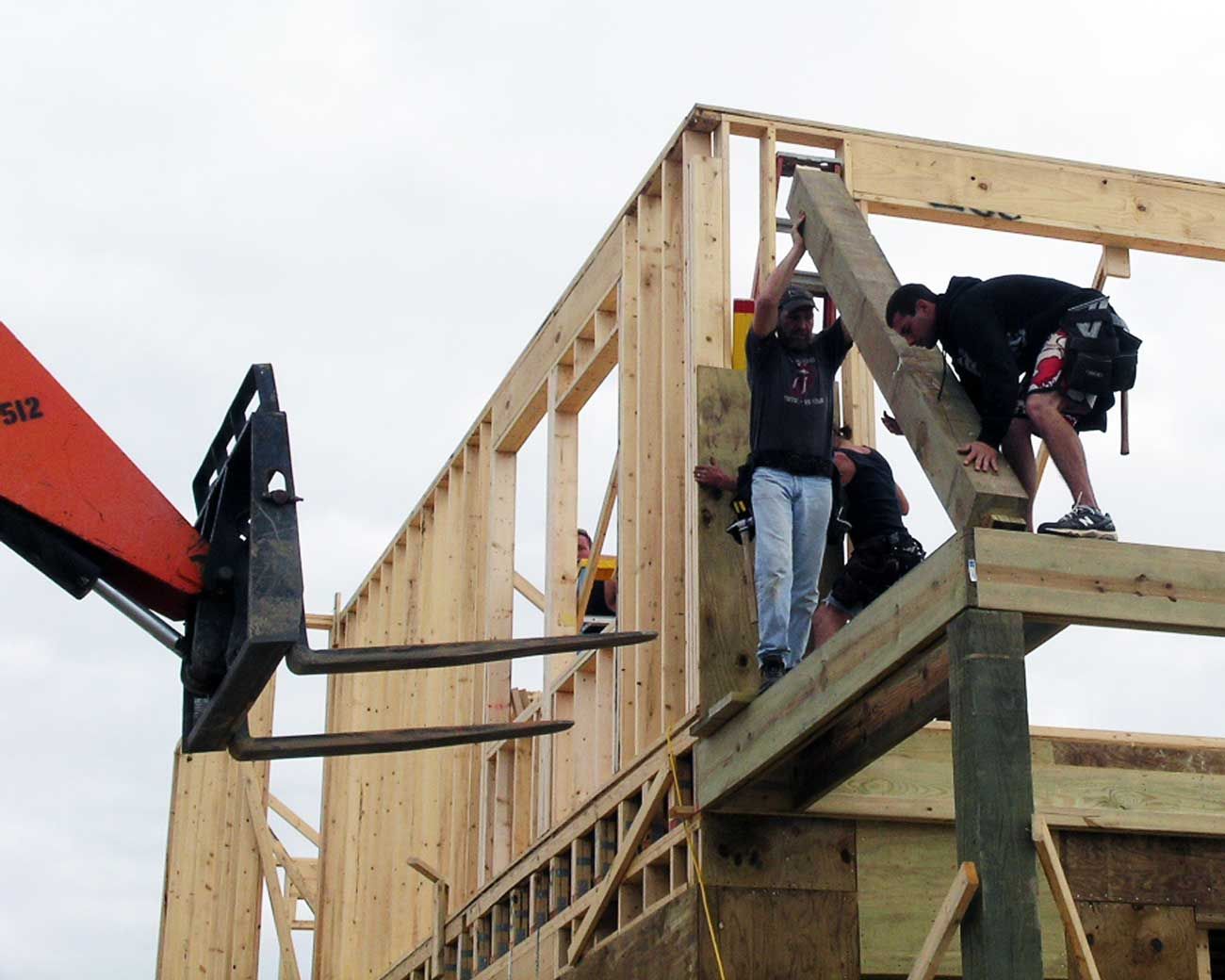
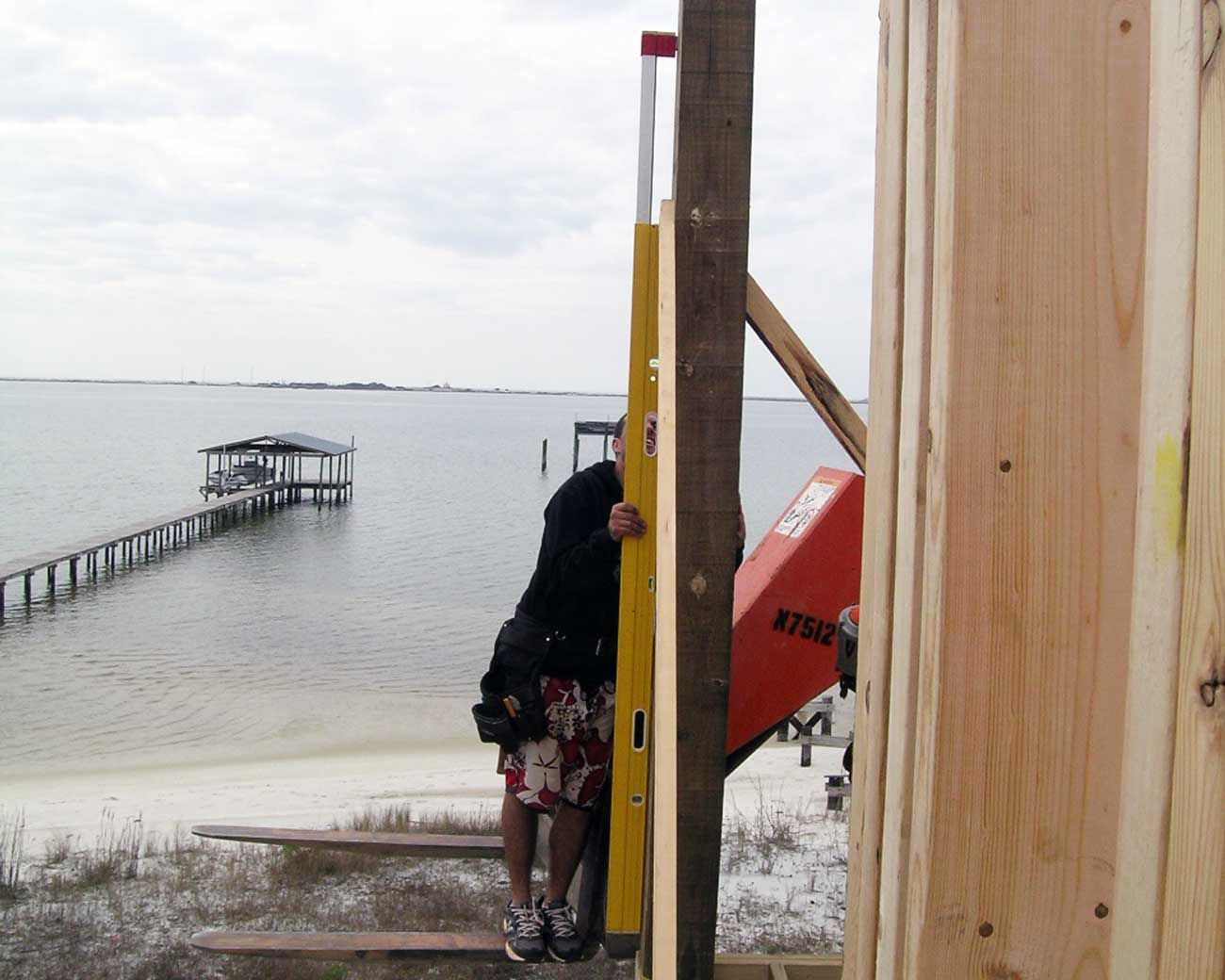


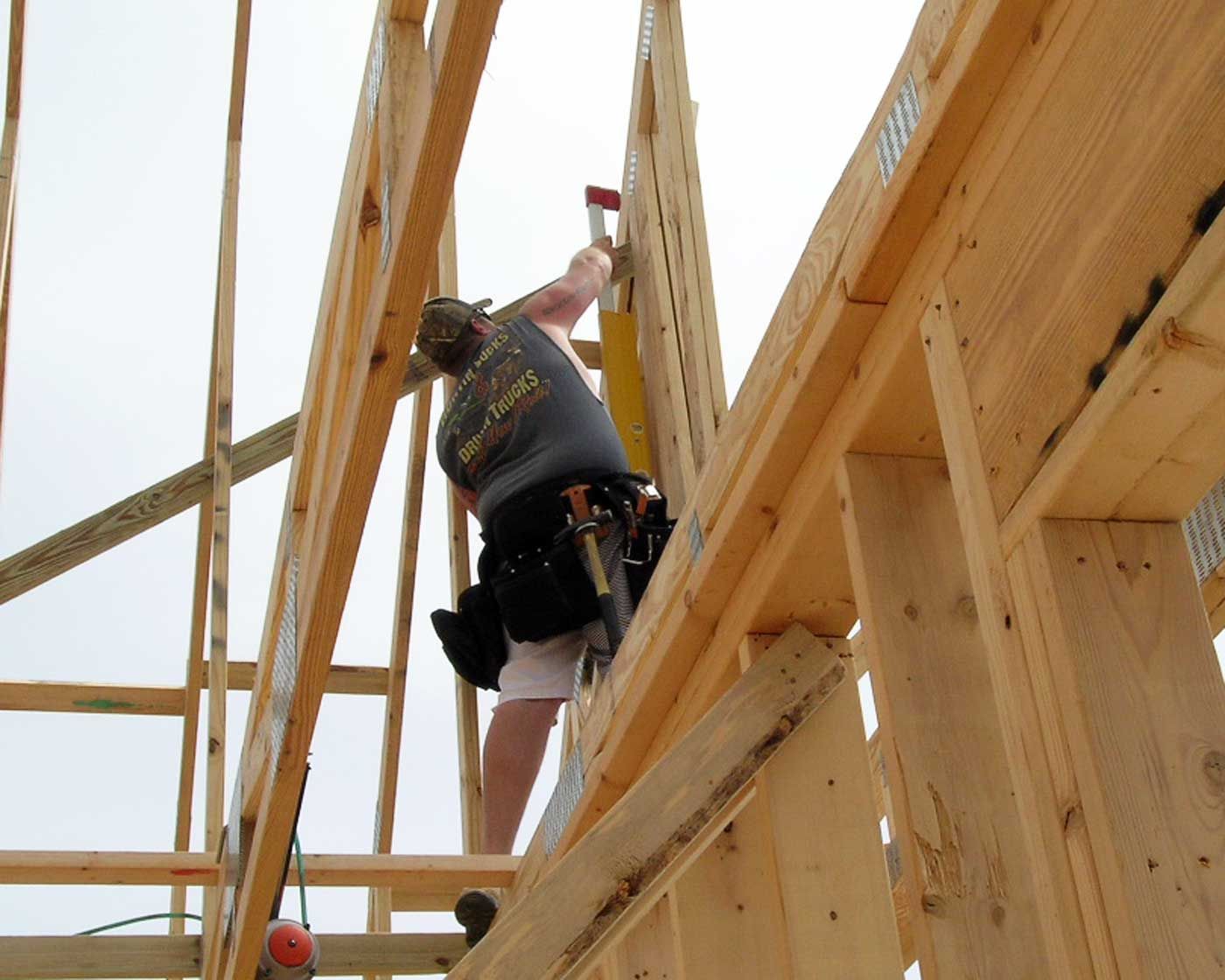

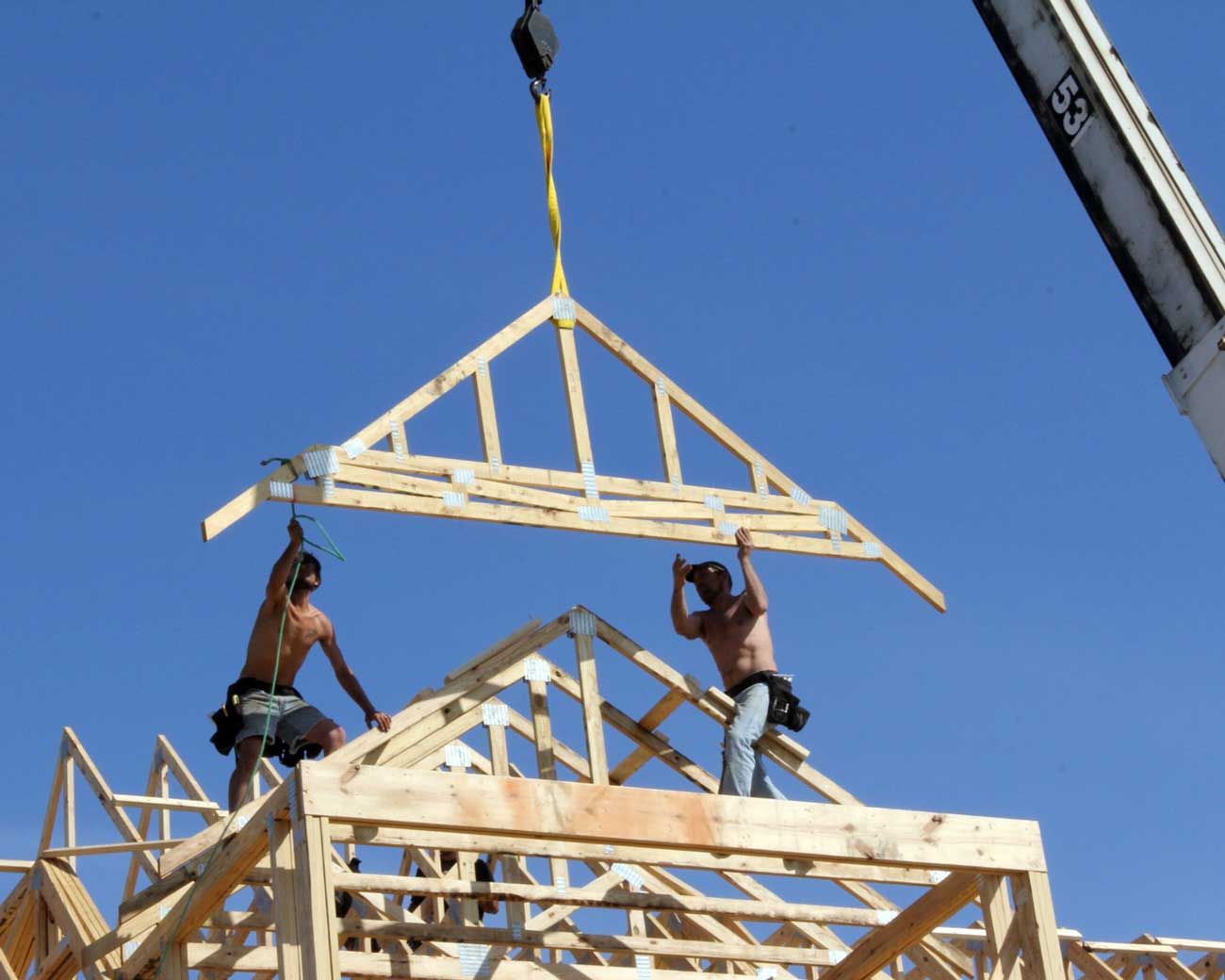
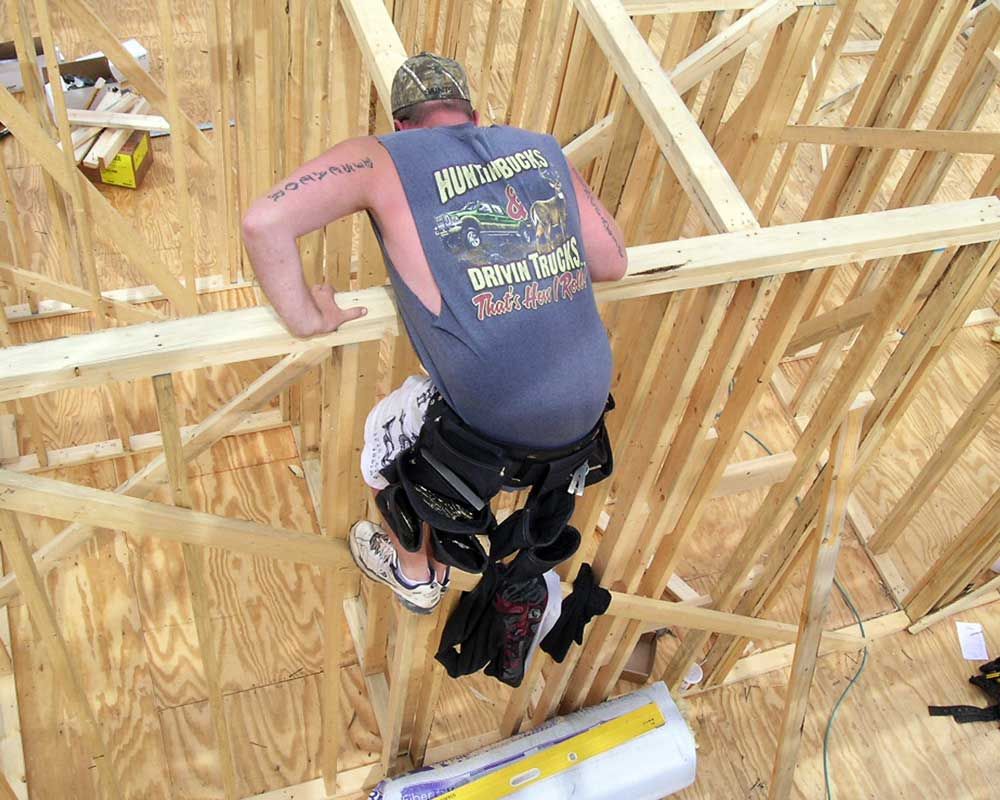
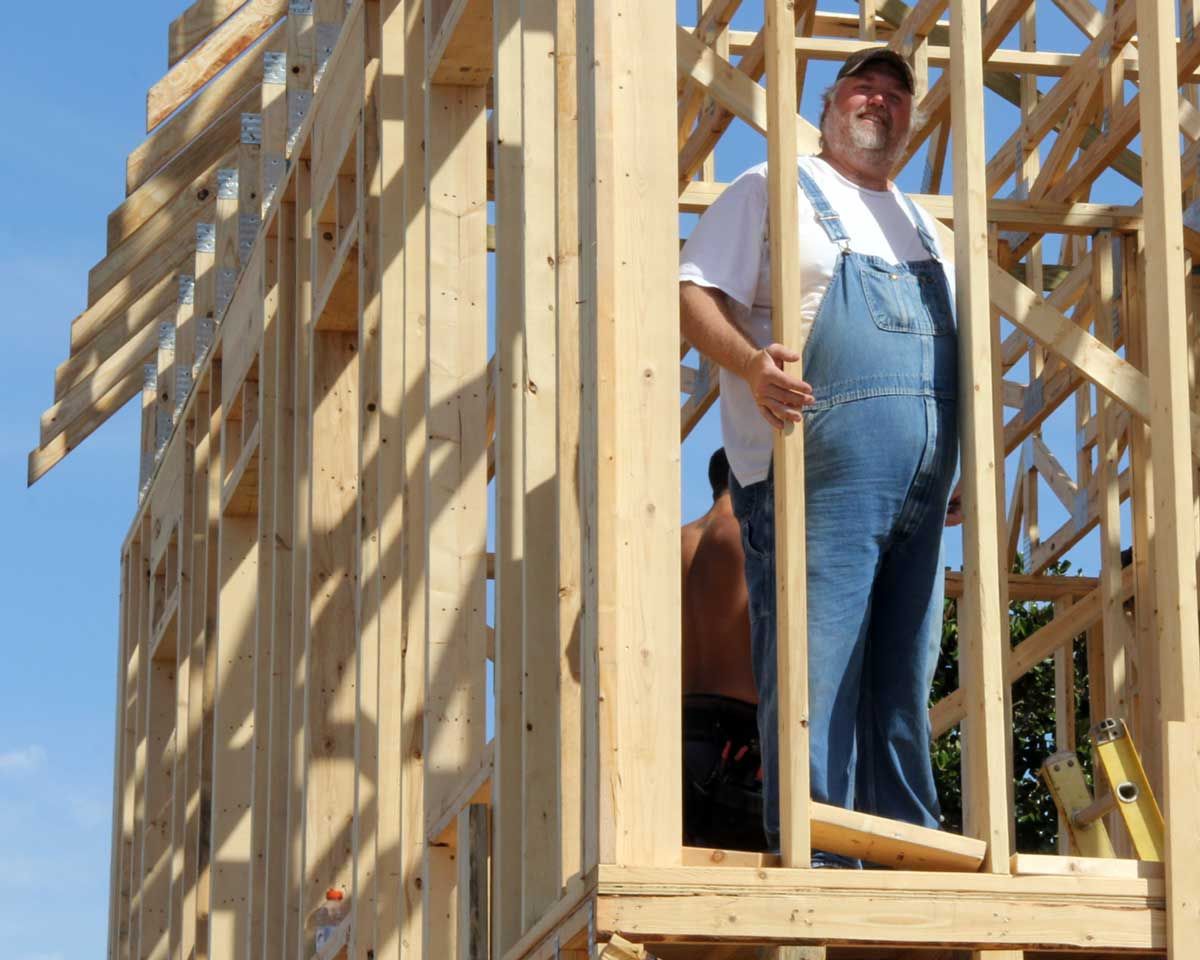
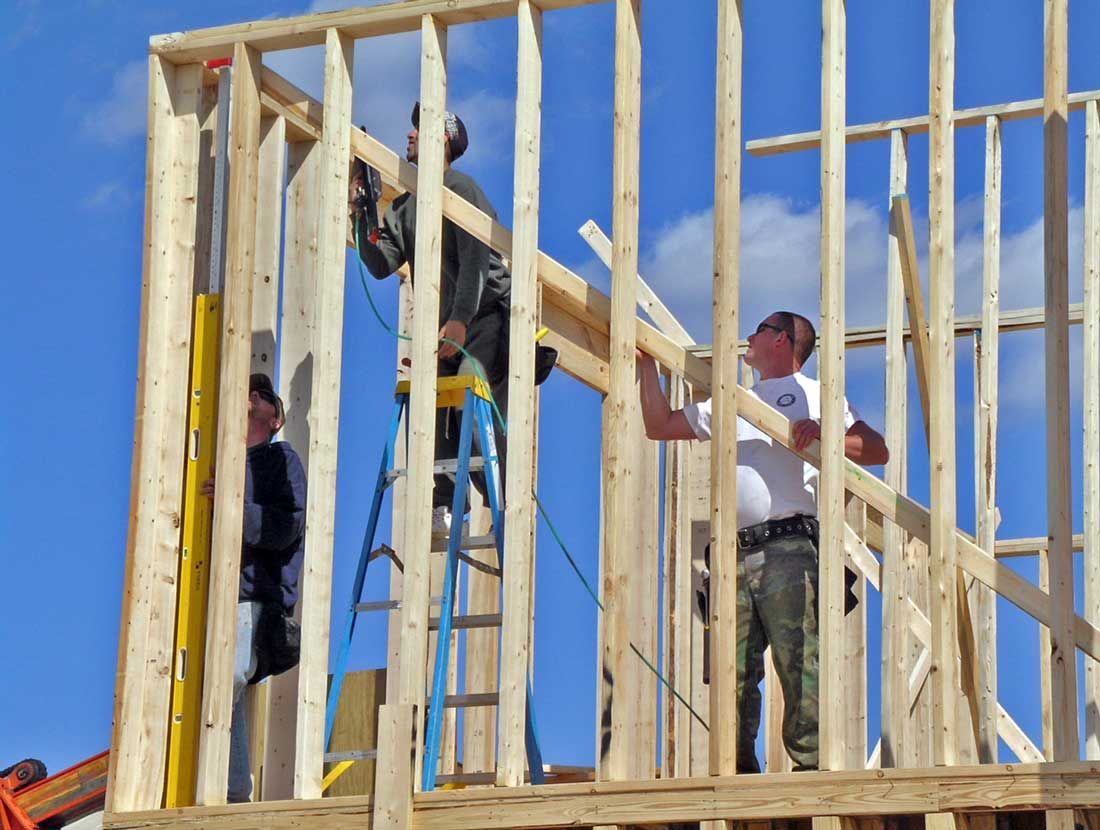
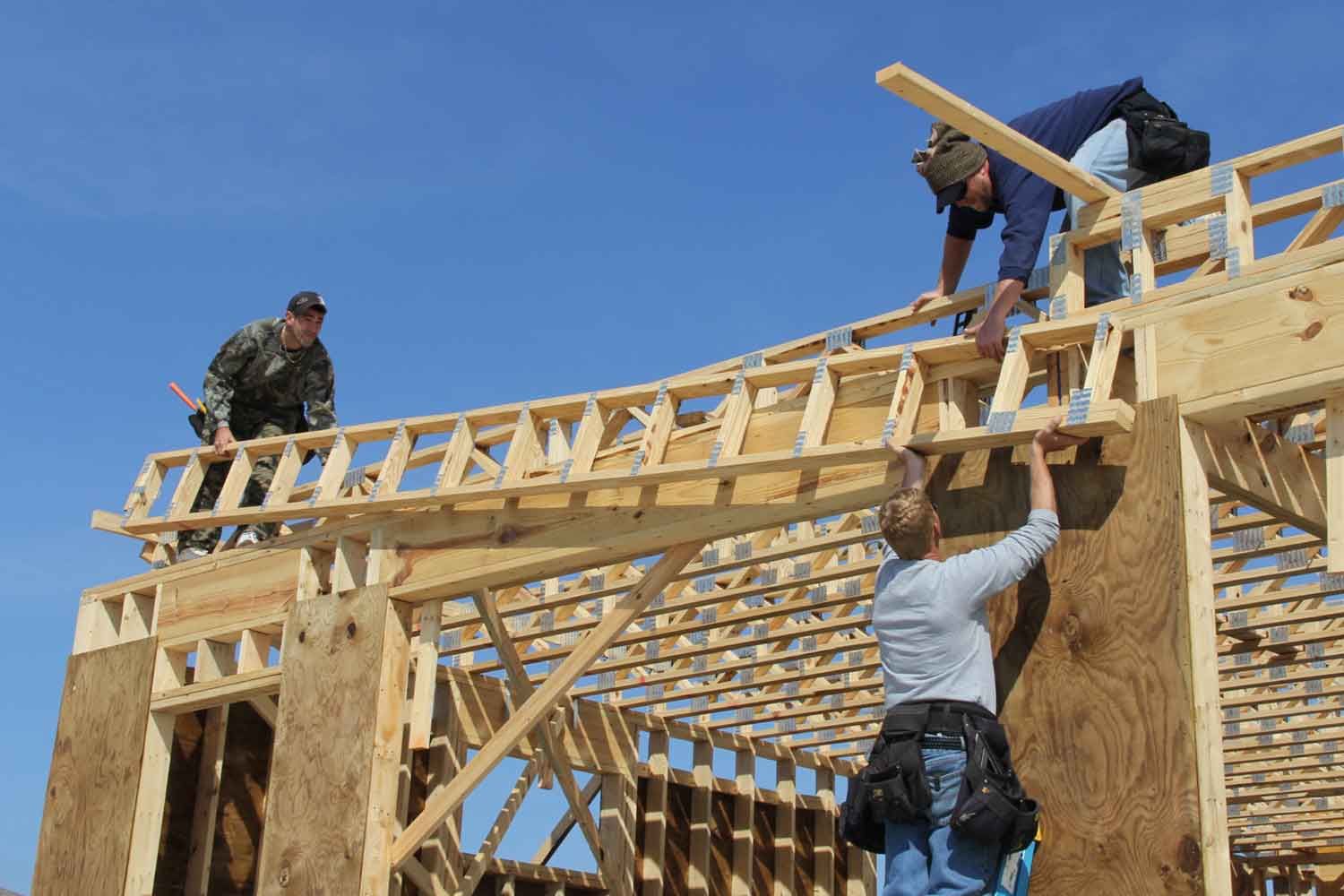

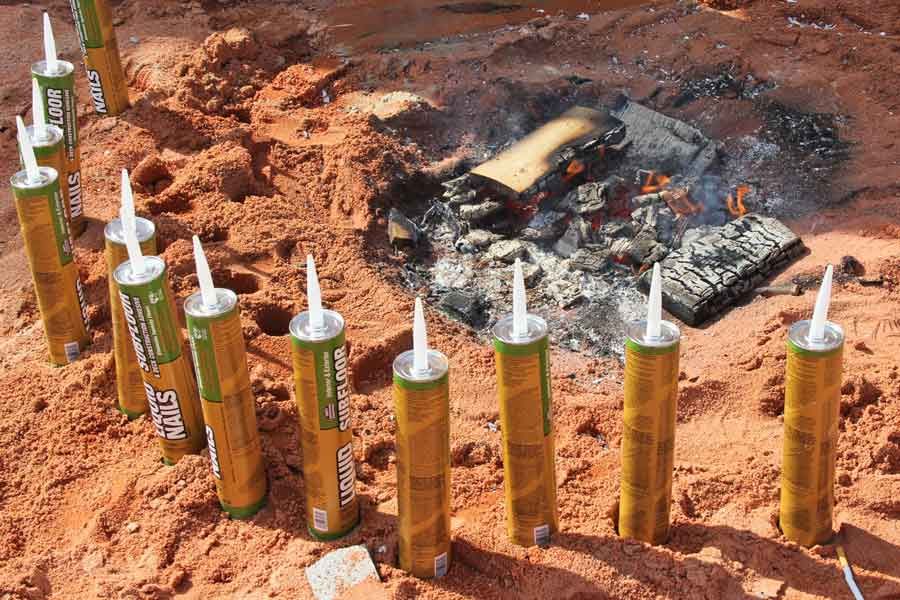

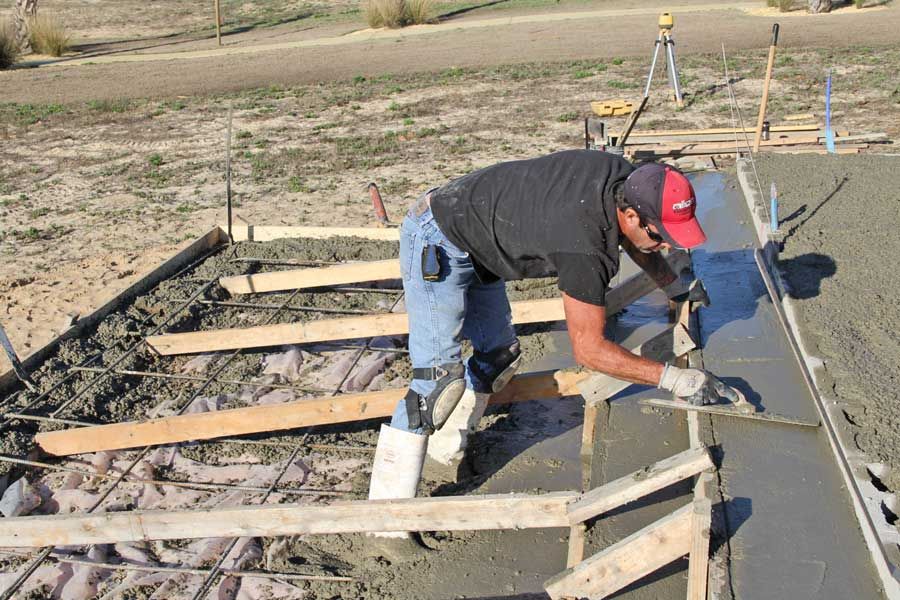



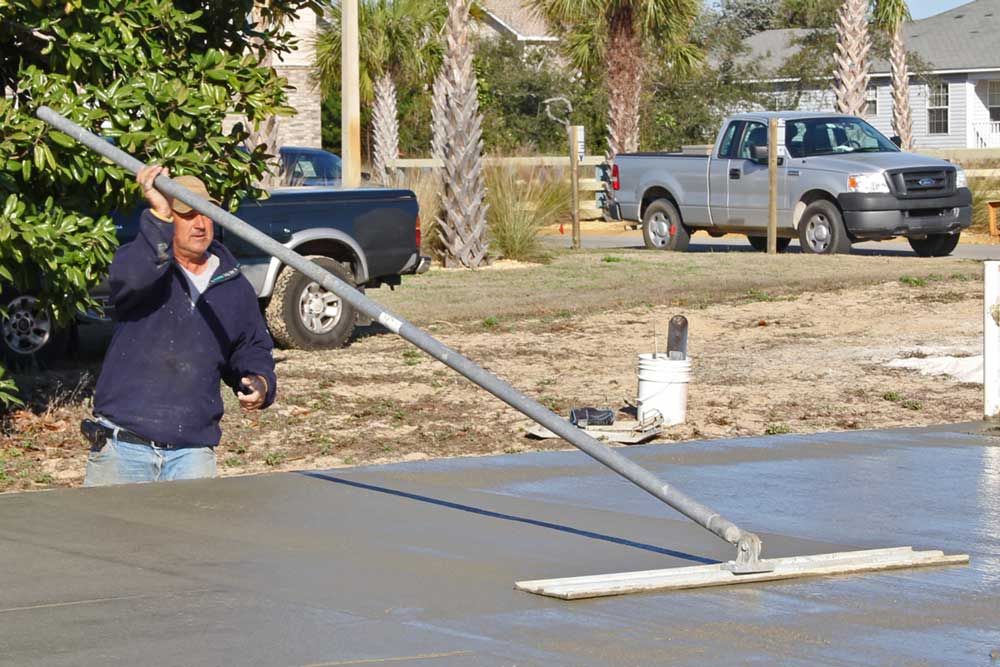
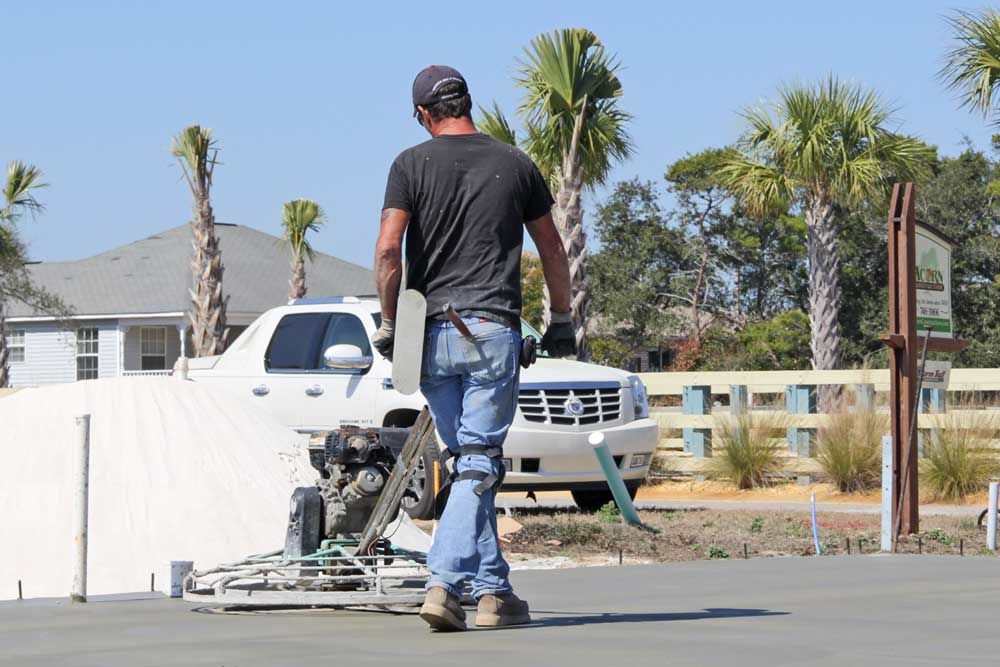

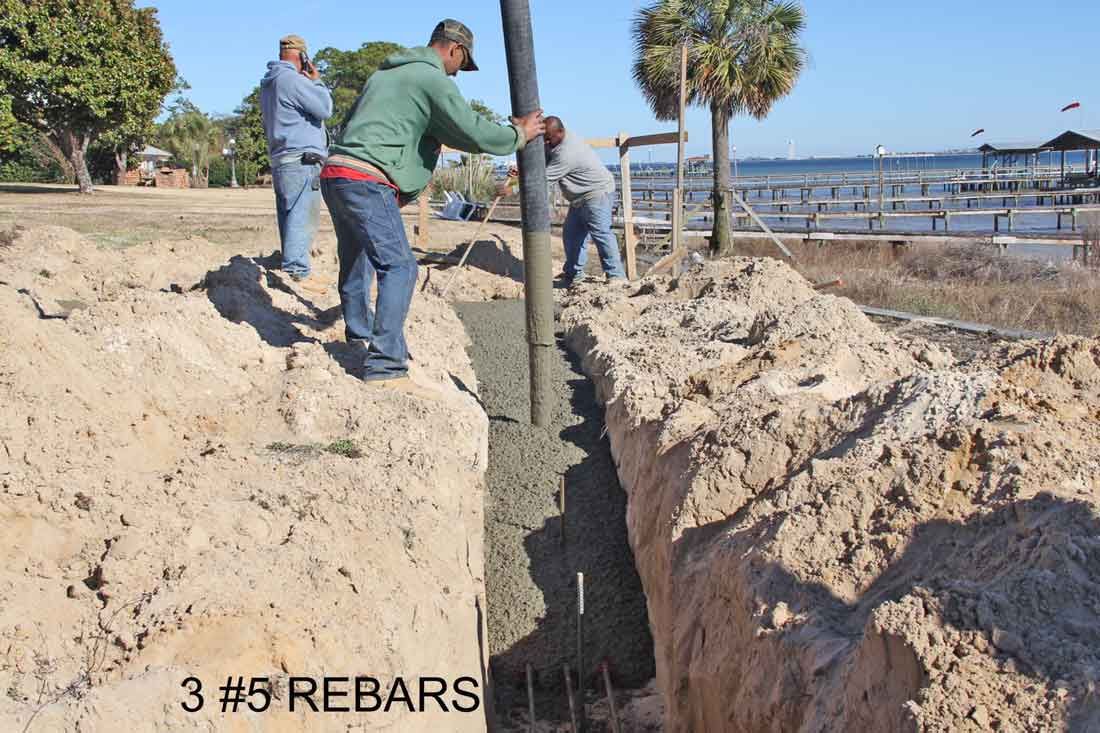
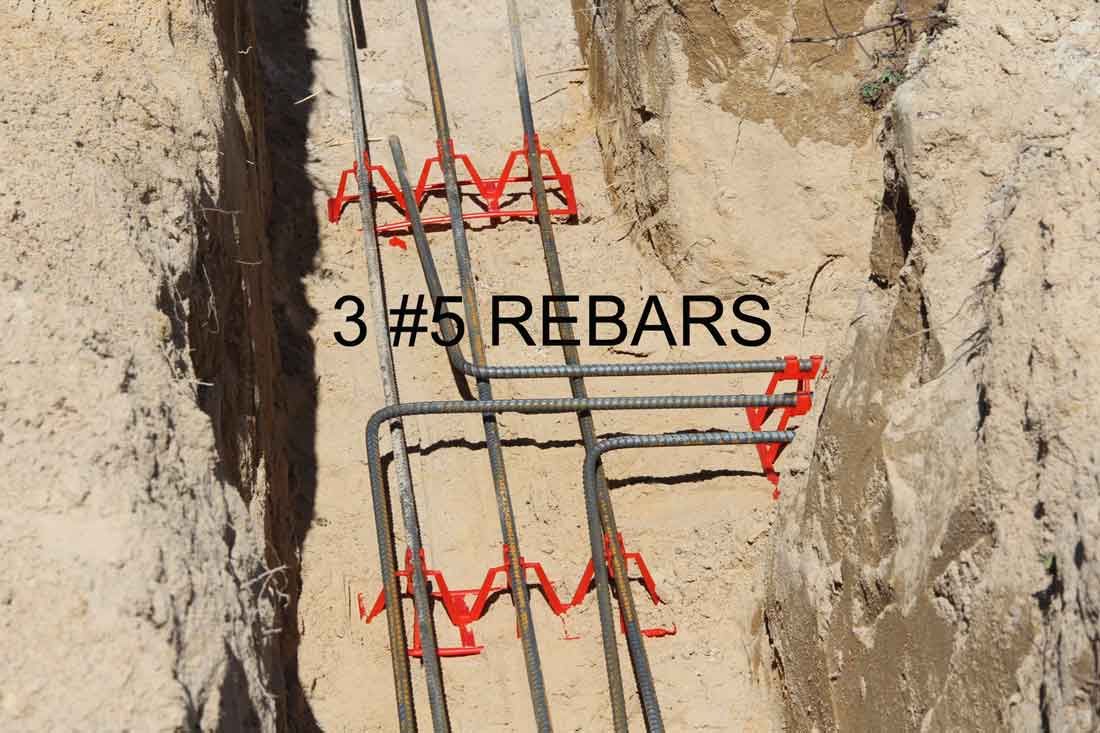


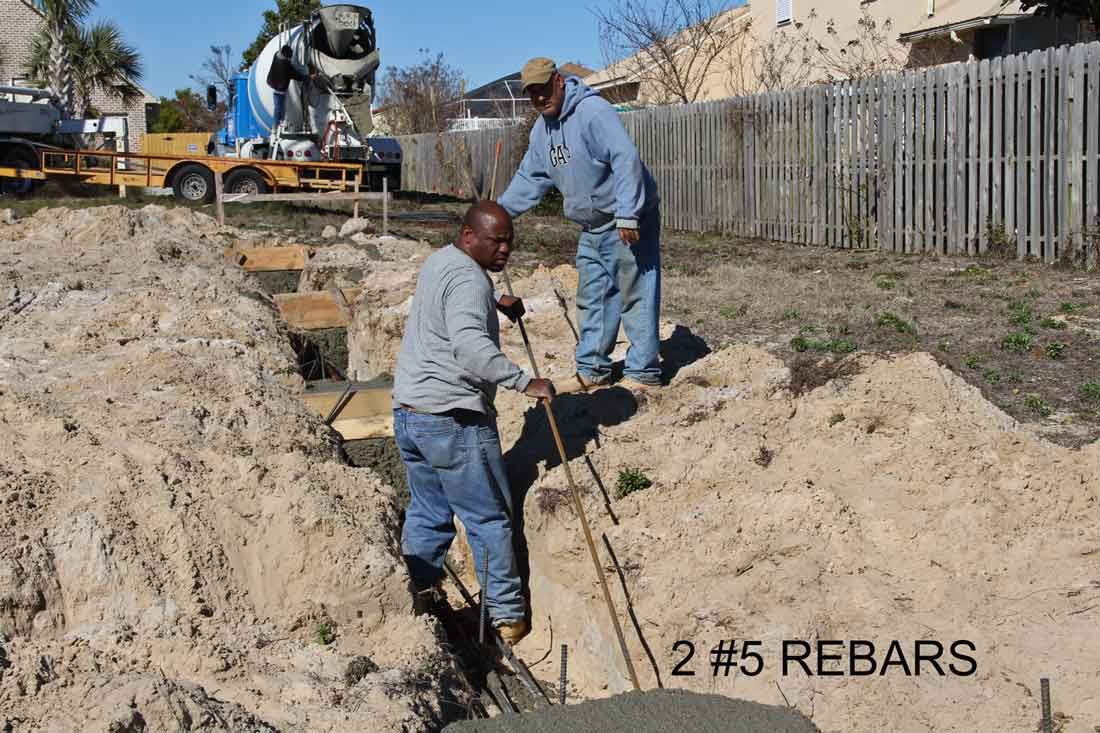
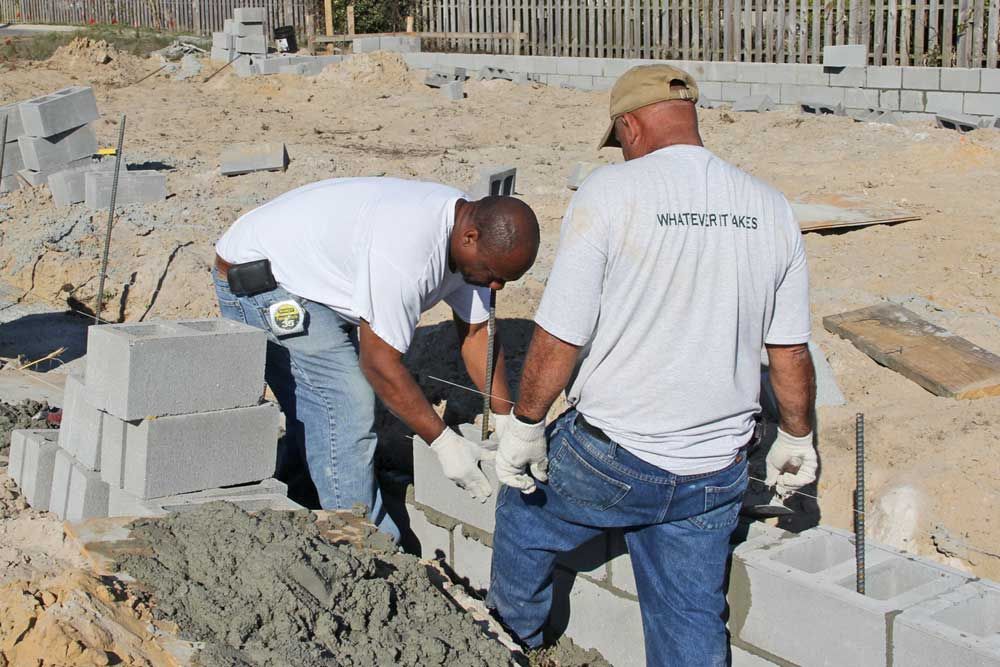
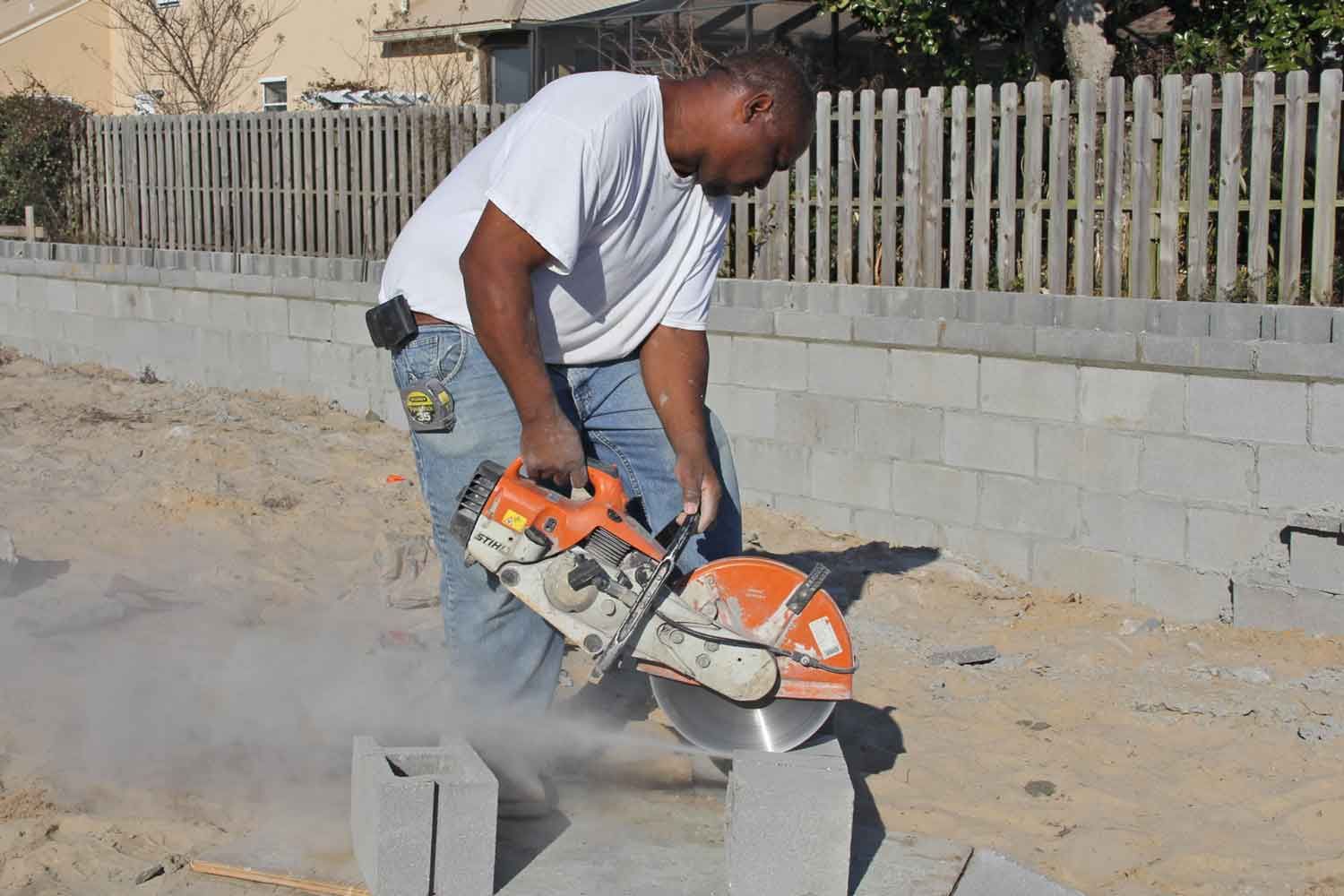
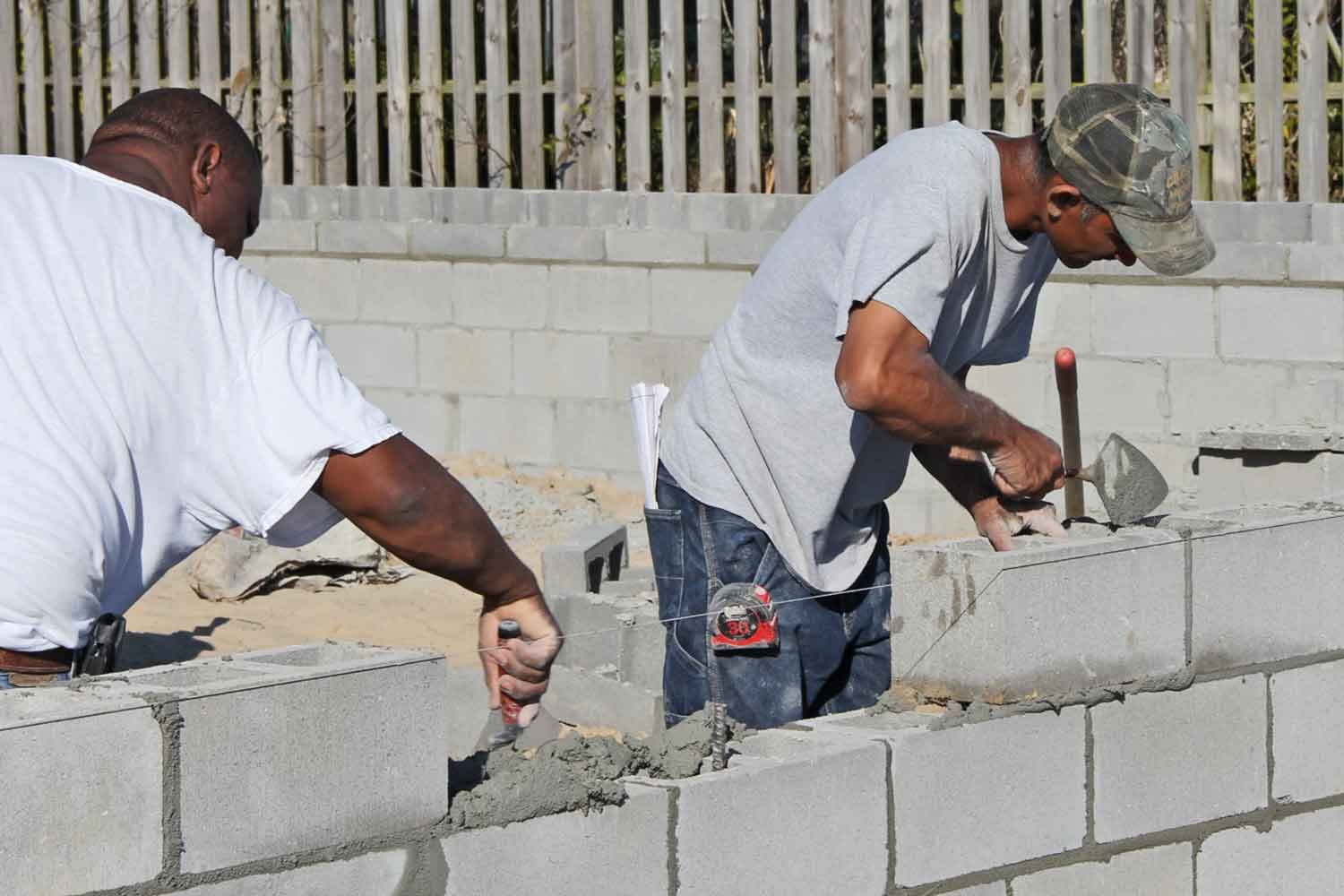

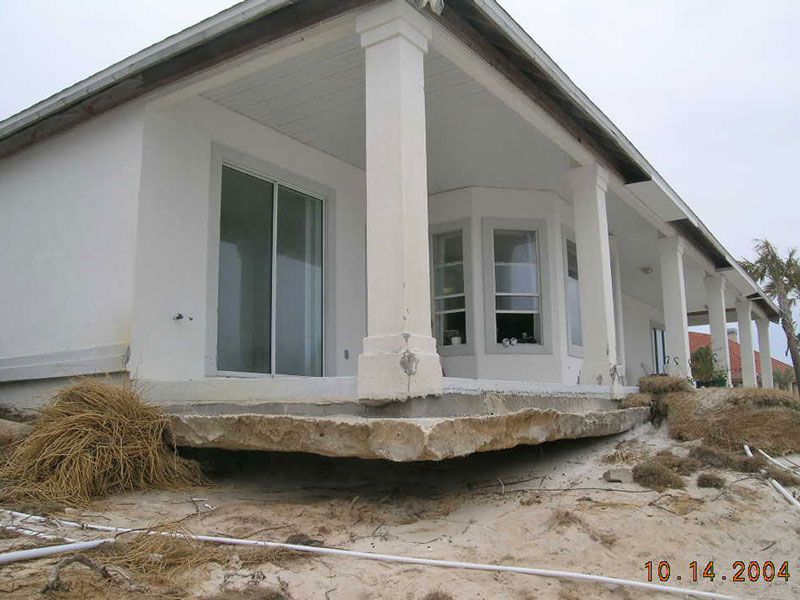
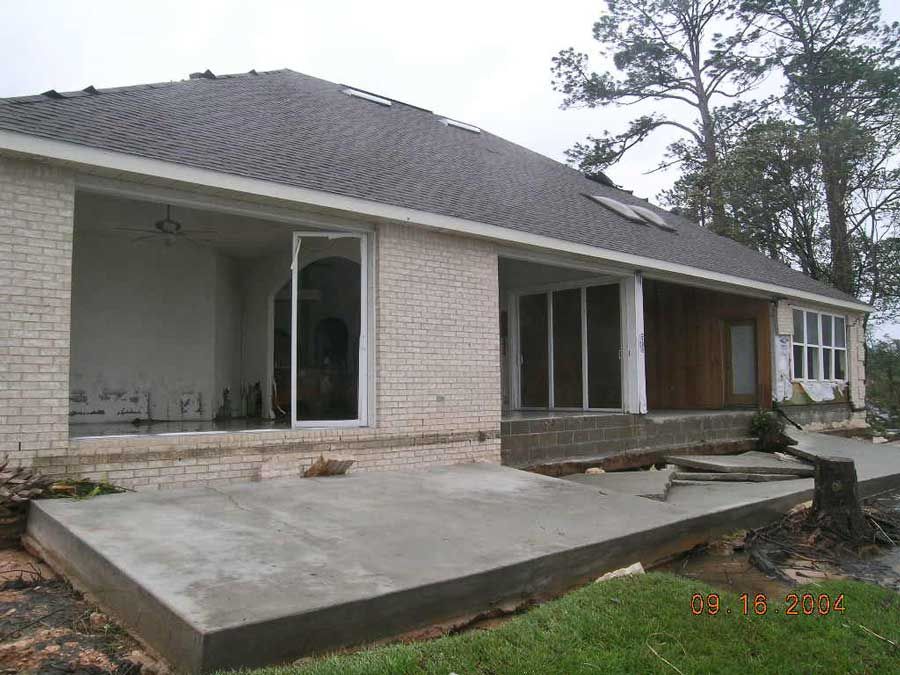



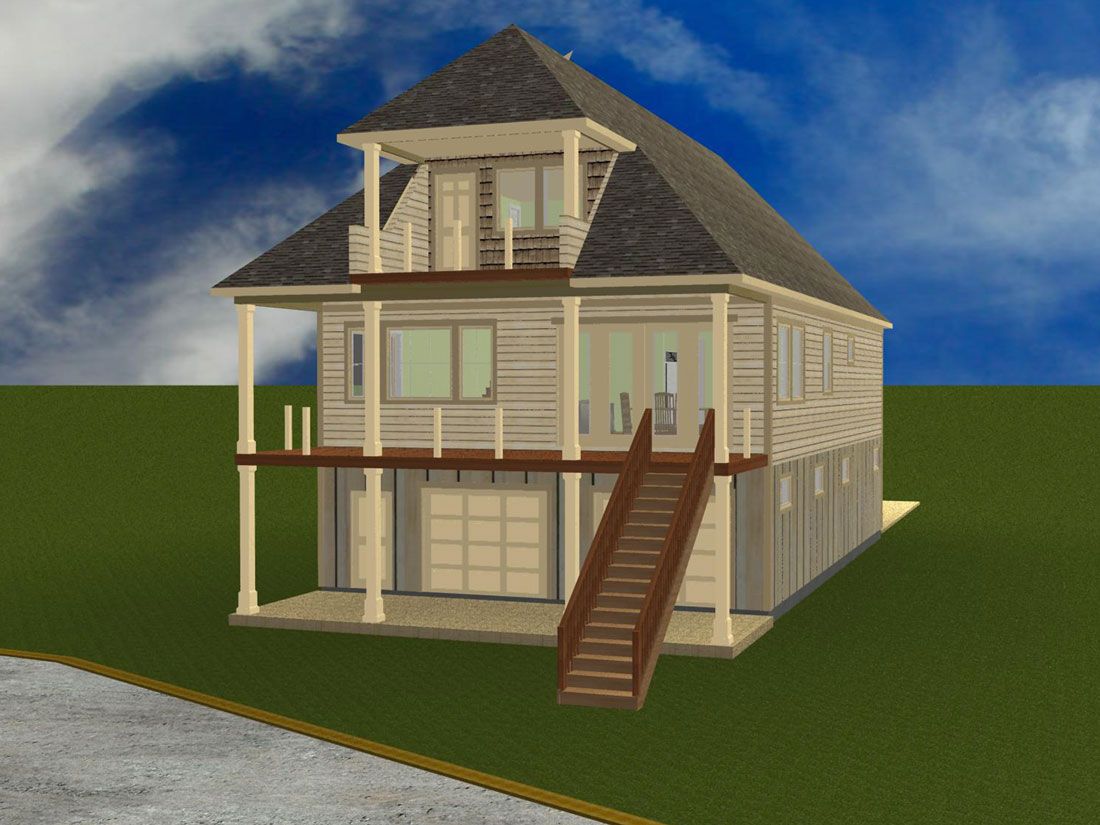

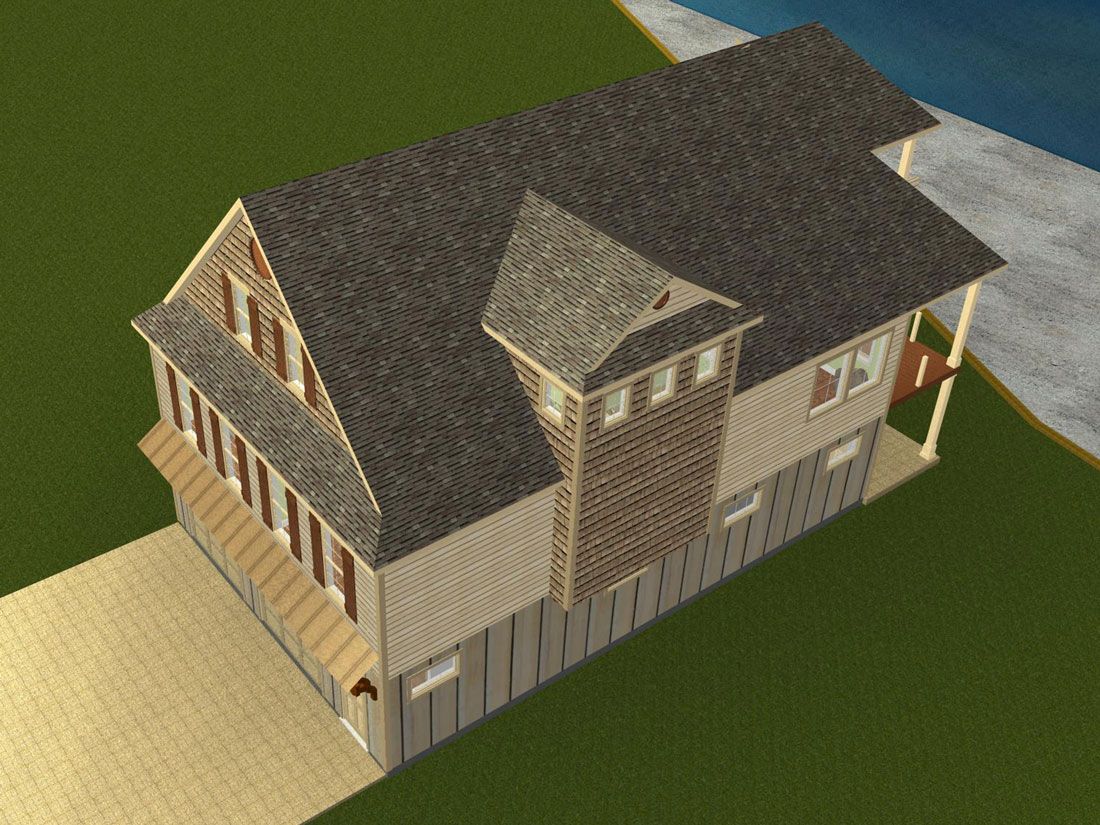
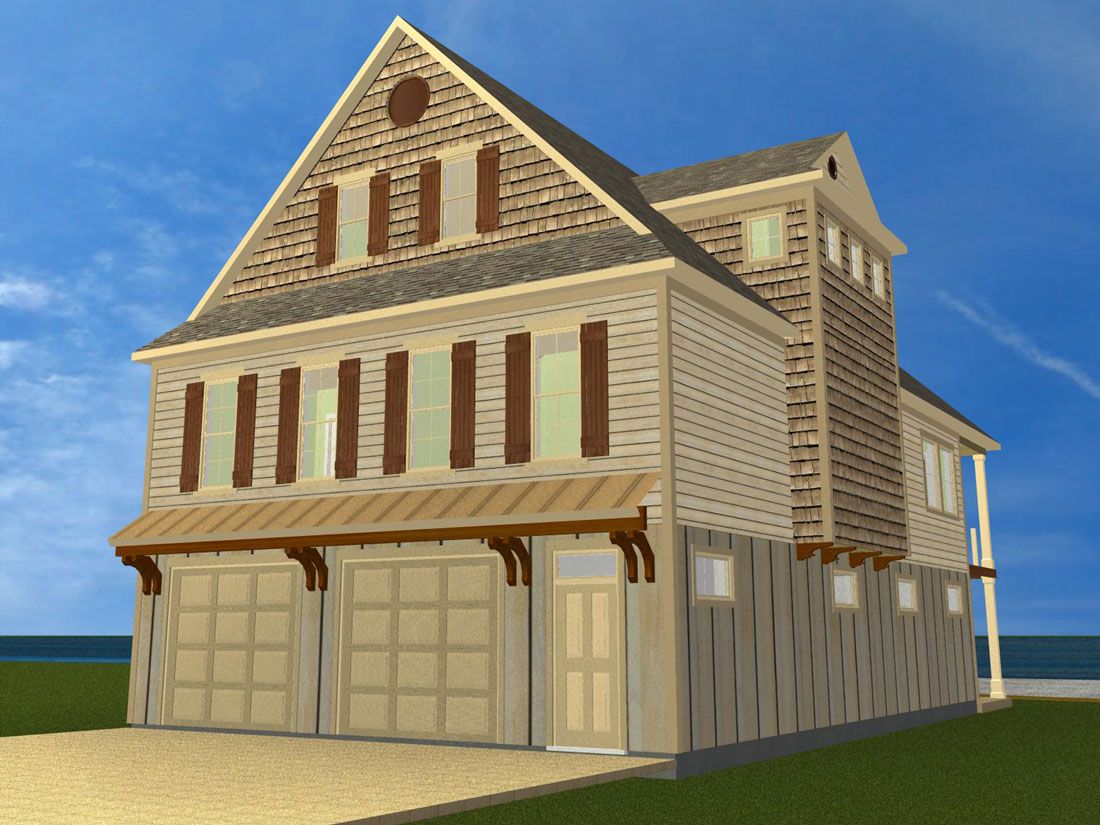

Rear elevation
Garage doors on the water side are designed to fail and allow flood-waters to pass through without causing structural damage.
Front porch corbels cut out of KDAT pine stock
We built the shutters out of hardiboard for durability and added authenticity by installing shutter dogs. The burnt orange shutters add a nice splash of color to the front elevation. Not too much, just right.
Back porch with Brazilian teak decking and stainless steel wire rope railing.
Antique pallet truck re-purposed as a coffee table.
Hall bath with tumbled stone shower surround and antique dresser re-purposed as a vanity.
BR2
BR3
Living room furniture group. Amoire on left conceals TV.
Entry door from garage below and stairs to 3rd floor master suite. Stairs are made from the same reclaimed heart pine material as the floors.
Master suite on 3rd floor.
Master suite on 3rd floor with 1x6 painted pine tongue and groove ceiling.
View from master suite into master bath highlighting wide plank reclaimed heart pine floor from Authentic Pine Floors.
Master vanity with 1x6 tongue and groove wainscoting.
Master shower walls of tumbled stone.
Master suite sitting room on the street side of the top floor.
Ground floor garage with steel support columns at left in the middle of the garage. High horizontal windows allow walls to be used for storage.
The owner's hillbilly spa heater. A small submersible pump circulates water from the spa through the hoses laying in the sun to heat water in the spa.
We built a hay loft door detail to break up the long east wall and add a degree of authenticity to the building.
Arts and crafts style switch plate covers.
Wire rope railing viewed from the seated position shows how well it opens up the view. The deck boards are Brazillian teak (cumeru).
Dougie installs cumeru (Brazillian teak) boards on the back porch. He's using a screw jig to set the spacing and install special coated screws at at angle so that they don't show from above. Cumeru is extremely dense, weathers well, and will last 25-50 years.
Rob, the owner, has stacked and sorted the floor boards by width, length, and appearance grade. These reclaimed heart pine floor boards came from an Old Crow distillery and contain a beautiful assortment of color, grain, and character that you just can't find in new growth flooring products. These floor boards will wear extremely well. Modern wood floors typically have high uniformity, are vulnerable to scratches, nicks, and dents, and you have to protect them very carefully during construction. These reclaimed boards have a dense grain and any nicks or dents just add to the distressed look. A great combination of natural beauty, durability, and wearability. Learn more at Authentic Pine Floors.
Rob selects the next board for installation as Gerry and Dougie call for various widths and lengths to be installed. There are 6", 8", 10" , and 12" widths which must be installed in a random pattern. Rob is picking each board to create the best overall presentation of these beautiful reclaimed heart pine floors.
Gerry installs the winder treads on the stair case. He made patterns for each tread then cut the treads to fit the patterns.
Gerry nails off the tongue and groove ceiling in the master bedroom. Jasper and Dougy assisting. You can see the foam attic insulation in the back ground.
Will holds up the gable so we can see how it looks and fine tune its position.
Zip tape is being applied where the next course of siding will have a butt joint. This will prevent rain water from getting behind the siding at the butt joint.
You can see how the but joints overlap the zip tape to create an air tight joint.
Jasper conducts an air leakage test using our Retrotec door fan. The fan draws a 50 pascal vacuum on the house which simulates a 20 mph wind on all 4 sides. The Walker residence tested at 1.6 air changes per hour at 50 pascals. A new home is considered to be energy efficient if it tests at 4-7 ACH50, 1.5-4 for a high performance home. At 1.6 we were almost off the chart!
ACH50 is the single most important metric for determining how energy efficient a home is. It's like MPG for cars. The more air tight a home is the less you have to heat and cool outside air coming into the building. The lower the air changes per hour is the more energy efficient the building is and the lower the operating costs will be. Humidity levels will be lower, temperature more evenly distributed, and overall comfort much improved in an airtight home.
George sprays open cell foam in the stairwell wall cavities. You can see how much the foam expands when the chemical reaction takes place.
George sprayed foam on the drain pipes on the third floor so when someone flushes the toilet you don't hear it in the living room below. Drain pipes used to be made out of cast iron and were sound proof but now with PVC you can ear water gurgling through the tub, shower, and toilet drains. The pink fiberglass insulation is for sound dampening between floors.
Front porch roof has been installed. This structure will have exposed beams, brackets, and rafters.
Windows and doors installed, ready for roofing and siding.
Roger applies adhesive caulk for the windows. The windows are sealed to the sheathing on the top and both sides but not the bottom so that any water intrusion can escape and drain out onto the outside of the wall. Sealing the bottom window flange is a common mistake made by most window installers. This is a big mistake because it can trap any water intrusion and cause it flow inside the wall and rot it out over time. A very small leak can go undetected for years until the whole wall is rotted out below the window. All openings should be flashed so as to direct any water intrusion to the outside of the wall outside of the secondary moisture barrier. In this case the secondary moisture barrier is the green zip wall coating which works great because it seals around the nail holes and all the joints are taped. This is a much better wall system than using house wrap over unprotected sheathing.
Roger and Steve set a window. A white, flexible, self adhesive sill pan is installed on the framing at the bottom of the window opening before the window is installed. This protects the framing and directs water outside the wall should there be any moisture intrusion.
A 50 mil peal and seal subroof has been installed to protect against water damage in the event any shingles get blown off during a hurricane. The green coating on the zipwall sheathing protects the wood and greatly reduces the amount of air that will pass through it. All the joints have been sealed with high adhesive tape. This is key to building an airtight, energy efficient home.
A 50 mil peal and stick sub roofing is being applied to prevent water intrusion in case of shingle damage during a hurricane.
The green zip wall coated sheathing creates an airtight home. We're using pressure treated plywood for the ground floor in case a storm surge gets it wet.
Framing in the gable end.
That skytrack and home made manlift box sure has come in handy on this job.
Danny and Steve set a back porch post
Danny plumbs a back porch post
Brandon, Jesse, Kenny, and Danny set the 3rd floor common trusses.
Josh, Jesse, Kenny, and Danny set the 3rd floor common trusses.
Brandon checks the gable end truss for plumb.
Jesse, Kenny, and Steve set the front trusses. I was able to get a 9' ceiling inside the shape of the trusses for the third floor master suite.
Jesse and Steve set the last truss over the stair tower.
Brandon climbs down, done for the day. It's not huntin season so I guess he's going truckin.
Robbie, the proud papa.
Brandon, Josh, and Roger adjust and brace the walls, plumb, level, and square.
Josh, Brandon, and Red lift a floor truss up onto the garage walls.
James threads 2x6 strong backs through the trusses which are nailed to the trusses to stiffen up the floor system.
The glue tubes were a little chilly that morning so they decided to gather round the camp fire and warm up before getting squeezed out onto the floor decking.
George, Ronnie, and Bill use come alongs to spread the concrete while Junior maneuvers the hose to place the concrete. The red paint marks the locations of where the anchor bolts will be placed once the concrete has begun to set.
Roy finishes the back porch steps. Note the extra steel rebars in the back porch behind Roy which add strength to resist damage in the event of a storm surge.
Tony and Roy hand screed tracks in the mud to guide the vibratory screed. The grade stakes have nails in them marking level reference points for them to work to. You can see the yellow laser head in the back ground which was used to set the grade stakes level.
Junior operates the vibratory screed to smooth out the concrete to a level surface. George, Bill, and Tony spread the concrete behind him as Junior screeds backward.
Tony sets the anchor bolts which are used to attach the walls to the foundation. The hold down straps protruding from the concrete provide extra holding power on either side of wall openings such as garage doors and at the building corners.
Gomez bull floats the concrete to push the aggregate down below the surface.
Roy on the rotary trowel putting the final touches on a smooth finish.
Junior and George use every bit of the 100' boom to pump concrete into the porch footings near the sea wall.
We dug extra deep footings to prevent undermining of the foundation during a severe storm surge.
We're using 3 #5 bars for extra strength to resist erosion and undermining during a storm surge.
George and Junior bend the #5 rebars that will be placed in the top area of the footings.
Junior cuts a rebar.
George and Gomez place #5 rebars in the top of the footing to resist failure in case the footings ever get undermined by scour (erosion due to storm surge). This is highly unlikely at this depth but just in case the sea wall fails, we're covered.
George and Gomez lay up the block.
George and Junior lay up the block.
Gomez checks the elevation at the porch with a laser level. We're using 12" block around the porch and a #5 bar around the top to create a secondary sea wall in case the primary sea wall fails.
This is why we're building a deep footing with extra steel reinforcement. This porch on the sound was severely undermined during hurricane Ivan. There was too much settlement and the home was later demolished.
This home on the sound was severely undermined by storm surge during hurricane Ivan. The patio and house footings were undermined and quite a bit of the fill underneath the slab was washed out. Amazingly, I was able to repair it. I jacked the house back up level, poured new deeper footings, and built a new deep footing patio for future storm surge protection. View Horan repair.
Here's an example of how scour tried to get under a footing right next to a sea wall during hurricane Ivan. The corner created an eddy which caused the scouring action. The footings were slightly undermined but held because there was sufficient strength in the footings.
These are preliminary models for the Walkers. They want a rustic country barn style that fits on their water front lot in Navarre. The ground floor will be a flood-through design which will allow any storm surge flood waters to flow through. The foundation will be a deep footing grade beam designed to prevent washout should there be any erosion from a storm surge. The garage walls will be solid shear walls on each side with garage doors on the front and rear to allow any potential storm surge to flow through without damage to the structure. There are no pilings or blowout walls to fail or repair. In the event of a storm surge the garage doors will fail and allow the flood waters to flow through. Notice that the water side has hip roof shapes instead of gable ends which make the structure more wind resistant on the water side.

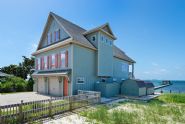






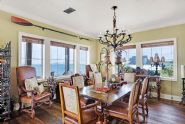




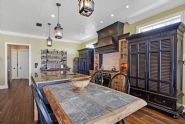














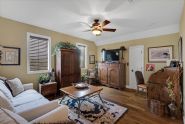




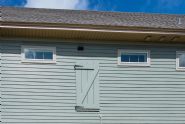


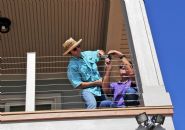


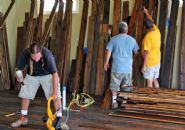
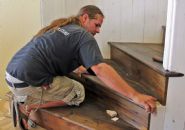







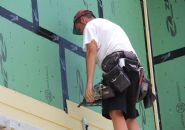

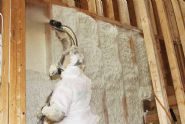




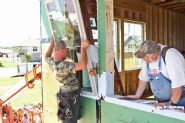


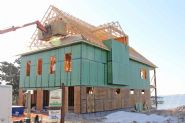

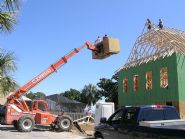



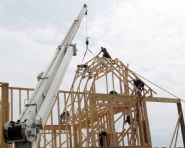
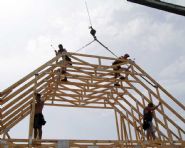

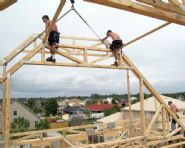





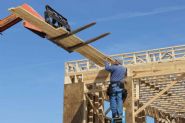



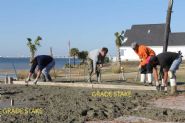








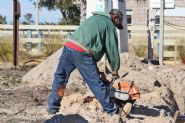




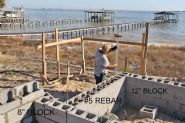


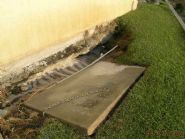







Walker residence
Dr. and Mrs. Walker wanted a home on the sound reminiscent of his childhood home on the Jersey shore so this is Jersey shore south. Try saying that fast 3 times. Call 748-3066 if you can do it. It features a flood resistant foundation and a flood through design which allows flood waters to flow through the ground floor garage without causing damage instead of knocking down blow our walls. The garage doors facing the water are designed to fail during a storm surge and allow water to flow through the garage and out the front garage doors. There are no pilings in this type of construction and no blowout walls to repair in the event of a storm surge. Just hose out the garage and replace the garage doors.


